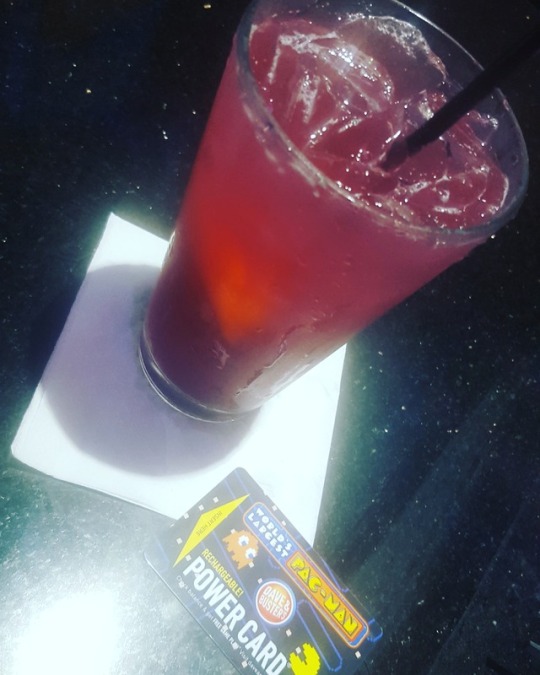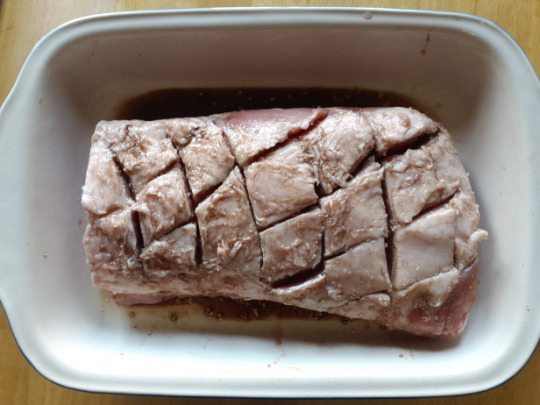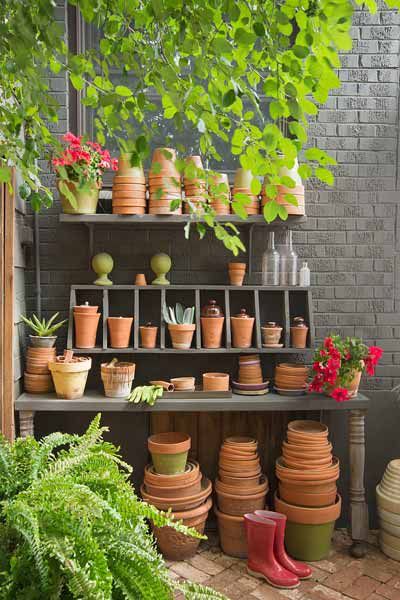#Lots of leftover stock from the conventions I did this year!
Text






Just added a bunch of new cute stuff to my shop: keychains, greeting cards, glitter stickers and more!! ✨ Check it out!
#millie's art#Lots of leftover stock from the conventions I did this year!#jem and the holograms#my little pony tales#independent artist
23 notes
·
View notes
Text
Con Report
bad stuff, but expected:
.. Actually, I didn’t know what to expect this year, this I was an exposant and not a visitor. ^^’ I guess since I knew beforehand that I’d be close to a concert scene, so I’ll have some noise nuisances. Oh boy, was I right! xD the last day, when we were resting in complete silence in my friends hotel room, I could still hear my ears buzzing from the 4 days long concerts! xD Plus, my voice was raspy for a good day and a half after the end of the convention from all the talking, screaming when concert and “singing” along I did ^^’
I also had a lot of trouble taking my whole stock to Paris, as I had 25kg for just the paper, and I only sold like 6 of them, but that was my mistake ^^’
worse stuff, and unexpected:
Huh.. Well, honestly, I don’t remember anything terrible this year at all, everything was so much drowned in all the positive that I can hardly think of something remotely bad. I mean, the only weird stuff, not bad, that happened was a guy who stopped at my friend and I stands and was feeling so lonely he almost burst out crying in front of us. We invited him to stay a while so he could calm down and he now considers us his new best friends. While we were both a little unsettled by his behavior, he didn’t seem very dangerous and came back the day after to tell us goodbye, as he was going home.
great stuff:
I kept a stand with my great friend Rena Circa as my stand neighbor and it was amazing! I spend the most wonderful four days I had in a good while >w< I met plenty of people loving my pin designs and my style, I learned so much about how to keep a stand and how I want mine to look like in the future and how much I just loved being there with my friends. I saw a few friends, great cosplayers again, and could even see my beloved creators that were at the other side of the festival and buy them some new pins for my new project: the pins mail waistcoat! I took some commissions during the festival that were quite cool to work on too (a few pictures are coming). <3
conclusion:
Awesome convention!! And wonderful event >w< I’m very excited at the idea that I might do it again next year or another convention. Now it’s time to go back to the normal activity and finish the leftover commissions <3
1 note
·
View note
Text
Alright, enough of you would like to see my likely long rambly post about my 3-day weekend away so let’s do this.
About a month ago a friend of mine connected with me and asked if I would be interested in a girls’ weekend because there’s a loud music festival that happens practically in her backyard every year and she didn’t want to be in town for it. This friend lives in Appleton nearly 2 hours away from me and we rarely have reasons to be in each others’ neck of the woods anymore so I don’t really visit with her much anymore. So when she asked I really wanted to say yes, but she just so happened to be suggesting a 3-day trip the same month as my 6-day vacation to travel to North Dakota to see family and attend my cousin’s wedding. We planned a budget accordingly and I just gotta be conscious of money the next couple of weeks.
The music started on Thursday and ideally we would’ve left town that evening, but I ended up being scheduled to work until 9 PM closing time at the pharmacy that night… of course. We had plans already scheduled for midday on Friday, so I had to pack everything before work and then left immediately from work for my nearly 2 hour drive and arrived at her house at about 11 PM. I listened to some of the first campaign of Critical Role - time well spent.
So our Friday morning was spent running a few errands and finishing prep to leave Appleton before heading out to Milwaukee including running her pup to a friends’ house, getting groceries, and picking up coffee to fortify ourselves. We headed out around 11 AM I think and arrived early for our massage in a Milwaukee suburb with time to spare. It was my first massage and it was pretty good other than too much on my neck which led to a light headache. I really should’ve said that it was hurting too much, but I wasn’t sure if it would or would not be beneficial as I had never had a professional massage before.

Our hotel was in Wauwautosa and we arrived a good two hours before check in so we went and got food at Dave and Busters which, for those that don’t know, is an arcade for adults - meaning there is a bar. It was fun, but 3 of the 5 games we played didn’t work correctly or at all and then it was time to head out. Kinda wish we had had the opportunity to go back for another hour since I had plenty of credits still and would’ve really liked to play Mario Kart and check out one or two more games. I did play a Star Wars game with the wrap around screen which was pretty wicked cool.

That evening, after we checked into our hotel and washed off our oils from the massage, we went to a suburb to participate in a Paint and Sip class - this one was a paint your pet class and they even had little gift bags with goodies for you pet. I picked a picture of Binx that was low lighting which they oversaturated so you could see both his eyes, but since they oversaturated the picture he no longer looked like a true black and white tuxedo but like he had shades of grey and black all over which would not have been my kitty. Since I was not following the picture exactly it was proving impossible to distinguish his features, so I gave up and just used my time to fill in the areas I knew I could and plan to ask another of my friends, who works with me for the library Paint & Sip classes, to help me finish it some time. No idea when that may actually happen since she is super busy, but I have plans that meant I was okay with my experience. Not thrilled since it was a $35 class not including our wine, but eh. Meanwhile my friend was frustrated because even though she asked a few times for help with colors she never got close enough to be happy with her picture. On top of that she had chosen a picture of her goofy dog with his tongue lolling out of his mouth, but they CUT OFF HIS TONGUE and then didn’t make the picture as large as they could’ve so she had a lot of negative space. She was unimpressed to say the least. At least our wine was good. Really the class should’ve had prerequisites such as having participated in their other classes to be sure customers would get the best out of their experience. They did see that I had not finished and were offering a free session to join their free paint classes for help finishing… which we couldn’t do since we both live too far away (in my case a good 4 hours). I do really wish it had been a more standard paint class with the fast blended background and straightforward foreground. Ah well.

We finished day one at the Cheesecake Factory, a first for me! My friend commented that she was never very impressed by their food and she wasn’t surprised do be unimpressed yet again (though I didn’t mind my food at all), but we finished off with cheesecake, obviously, and that was delicious. Unfortunately I forgot my leftover cheesecake at her house in Appleton.


Saturday was our busiest day. We started at the Milwaukee Public Museum which was excellent though it really is a whole day affair not the two hour filler we planned for it. About halfway through my friend started to get anxious about her car and concerned it had a ticket or had been towed and I think she was also just getting tired of being on her feet. I think I was overall more interested in the exhibits too and she seemed to only be truly interested in specific things. I’m also a reader and wanted to actually read some of the shit while she just breezed through exhibit after exhibit. Like I said, we really didn’t have the time, but it was disappointing to be rushed so much.
Then we went downtown to The Safe House which she had wanted to check out. She did not realize it was literally right downtown and there was some anxiety, but we made it! For those that have not heard of Safe House, it’s a restaurant where the servers are in-character as secret agents and guests are also secret agents. There is a password to get in and if you don’t know it you have to prove you aren’t a spy by acting out some silliness. The interior is a wild and zany pieced together hodgepodge with references to spies in popular culture. Guests are given a list of missions (clues) to wander about and try to figure out the password. If you figure it out you are able to get a discount on their merchandise.
It was more confusing than my friend was expecting and not as engaging as she had expected either. She was pretty sure she figured it out, but neither of us were really worried about the merchandise, so we just didn’t even bother. They had a pen listed that we both kinda wanted, but they didn’t have any in stock.

After that we went to the North Point Lighthouse which is a lighthouse museum and I really enjoyed that little attraction. After that we finally headed back to the hotel for a short break and to get bandages because she wore strappy shoes that were trying to eat her feet. We discovered there was some sort of convention going on so the hotel was packed and TOO busy for only two slow elevators.
Next we went to Water2Wine, a winery in a suburb that imports their grapes and then makes their own wines in house. It was cute and pretty decent, but we weren’t overly impressed tbh. Next door to the winery was a Half Priced Books which my friend suggested instead of going to Barnes and Noble in the mall. So we wandered around, which was the first time I’d been to a Half Priced Books, but she got bored relatively quickly and dragged me out well before I would’ve like saying I could go to Barnes and Noble instead and then if she got bored she could wander the mall. So then we ended up at the mall and I was ready to settle into browsing for nearly an hour before wandering around the rest of the mall until close, but again she dragged me out likely because it isn’t that fun to wander by yourself. I did pick up a book at both places, Of Fire and Stars and Spinning Silver. I could’ve stayed in the bookstore all evening and likely only bought the one book, but nooooo, I ended up in the game store and bought an expensive gorgeous metal dice set. Pft. I also bought macarons which I had never been able to try and the ones I got were disappointingly too sweet for me to enjoy. We were both ready to be done, so we grabbed Chipotle, another first for me, and just curled up with a little TV before bed.
Sunday we got brunch at the ludicrously hipstery Cafe Hollanders. Very good and excellent atmosphere, but I couldn’t get over how chique it was being. The cafe was located in this ritzy area filled with high end stores that neither of us could afford, but we wandered around and gawped at insane prices before heading out to the Milwaukee County Zoo which I have WAAAY too many picture of to share here, so just check out my Instagram. I mentioned a few times, because I was seeing merchandise, that we hadn’t seen the red panda and my friend said she thought it might be a seasonal exhibit. After I was home I checked… it wasn’t. We literally missed it and I kinda wanna cry tbh.
We left Milwaukee around 4 and I ended up home around 7:30, but I tossed some gas in my car, washed it, and ran to the grocery store first so idk exactly how long my drive was. Though not everything was amazing I still had a pretty damn good time, my friend on the other hand seemed to get bored and/or impatient and/or disappointed/frustrated on a regular basis and I swear she didn’t enjoy the trip nearly as well as I did which just makes me sad. I also realized that since the last time we had really hung out we have both changed. Whereas I am online a lot and am fairly socially conscious she was not and she made a few borderline racist jokes (okay, not really borderline at all). Nothing nasty, just those ingrained stereotype jokes that are just not funny when you recognize how hurtful they can be. It also became more apparent that our interests do not overlap much at all. Which is another post to ramble about later. I loved the lighthouse and the zoo and wish I could’ve had just a bit more bookstore time and arcade time. It was nice to get out of town and not think about work while getting to catch up with an old friend though.
18 notes
·
View notes
Text
Conventional oven-style Kalua Pork recipe for the lovely @jadesabre301 who I am still like 87000% in love with because she is the best. Also, I’m sorry in advance. But not sorry enough to stop.
OKAY CHILDRENS LISTEN UP, WE GON COOK A THING WITHOUT ADULT SUPERVISION
I'm pretty sure that I can never top my recipe for crock pot kalua pork for sarcasm and sheer epic style, but sometimes let's be real - you hangry and you ain't even got time to wait 24 hours for actual food.
So here's the bad news - you still have to wait like four to six hours.
But also, here's the good news. YOU ONLY HAVE TO WAIT FOUR TO SIX HOURS, which is less than 24. Do the (as Travis Willingham would say) reverse math.
If you want a little bit of backstory on what kalua pork is, check out this post. If you just happen to have a big ass hunk of pork in your fridge and you are desperately trying to figure out what to do with it before it starts to turn green and you have explain to your army of cats that you went grocery shopping without a list again, READ ON.
So fun story, for the last couple of years my family has decided that turkey is done AF and we're all sick of it by the time the Christmas holiday rolls around, so we've started the holy tradition of the Xmas Luau. We're talking steamed rice. Lomi salmon. Mac salad. Spinach Luau. Musubi. Manapuas. Purple sweet potato and haupia pie. Butter mochi. The whole thing (and yes, I know none of you know what any of this is, GOOGLE IT).
But you super can't have a luau without a main dish, so kalua pork is definitely the go-to.
The really nice thing about Hawaiian food (at least, the food from my childhood) is that a lot of it is really easy to make in catering portions. Food in Hawaii is like 100% grandma levels of 'you're too skinny, have another plate of food or twelve' so it's hella useful to be able to make things that are super simple to do in huge batches and then gorge yourself for days on the leftovers like an anaconda that's gotten uppity with a crocodile and can't move because gravity is a non-negotiable force of nature.
Is your body ready? Okay good.
INGREDIENTS
This is literally the same shit as in the other post, but since you're going to make it in a conventional oven instead of a crockpot, the amount of pork you want to cook is only limited by the size of your oven and the power of your will. Also, spoiler alert: once again we're not going to measure jack shit. I expect you to feel your way through this like a proper chef, and even if you're not one it is literally so hard to fuck this up.
You need:
An oven.
A pan that will fit in the oven. One of those disposable foil situations works fine.
Some aluminum foil. This is actually optional, for those of you who are motivated enough to want to do an additional step. I've done without and it works fine.
A hunk of boneless pork that will fit in the pan that will fit in the oven. Pork butt or loin works fine, and if it's got a bit of fat on it even better.
Salt. It does not have to be bougie salt of any particular kind, literally grab the rock salt that goes in the grinder you got at your wedding 15 years ago and still haven't managed to use up and that legit works fine. If you're real unprepared for this culinary adventure you can also use table salt, just use a light hand or you will possibly salt yourself into the grave.
Liquid Smoke. In a pinch you can use soy sauce, just dial back the salt or for real, you will have regrets and you will also have brought shame upon my house.
*For those of you who REALLY NEED MEASUREMENTS, a) this is not the cooking class for you, and b) I've had fairly decent results with using 4 tbsp of liquid smoke and 1/8 cup coarse salt per 5 lbs of pork.
**For those of you who like to live that YOLO life, remember that you can't take away salt once you've added it, and it's really kind of hard to use too much liquid smoke.
NOW HERE'S WHAT WE GON DO:
1. Score your pork lightly in a crisscross pattern. Stop screaming, I have a visual aid.

You don't even have to do it as deeply as I did here, because I went hard as a motherfucker and was being real sloppy this day, which was naturally when the hubster was like LET'S TAKE SOME PICTURES FOR YOUR SIBLINGS LIKE THEY'RE EVER GONNA MAKE THIS THEMSELVES (they have cooked this exactly 0 times to date). Somewhere between 1/4 and 1/2 an inch is fine. Make sure you do this on both sides.
2. Sprinkle on your salt and dump in the liquid smoke. You don't have to be fancy and do precisely half on each side like Martha, you can just literally throw it in the pan if you want and then roll your pork around in it to get things evenly distributed.
3. Massage your pork. Eh heh heh. No but really, distribute that shit evenly. Really grind it into the places you cut like they’re the bleeding wounds of your enemies. There are only three ingredients in this recipe, don't be lazy and also please wash your hands before and after, don't be gross.
4. Cover with foil and roast in oven at around 250F for four to six hours (or longer if you're trying to make enough food for six years so you don't ever have to cook again).
Here's a thing about that: Kalua pork, like all pork, can end up a bit dry if you don't take the laziest and most halfhearted of steps to prevent this. If you roast it covered until it's fully cooked (read: shreddable with a fork/disintegrating in the pan like it failed its DEX save) you'll be able to reserve more of the drippings (you want to do this for later steps). Also, if you want a bit of nice browning and texture on the outside, just take off the foil and let it roast for another half hour or so, or until you're too hungry to wait any longer, whichever comes first.
5. Skill challenge: Reserve the juices from the pan without scalding all your skin off. Please be careful, I am not responsible for your poor life choices or your delicate human flesh. Set aside.
6. Shred pork. Obviously kalua pork fresh from the oven is the most excellent and is at its juiciest, but you may still find that you want to add back in some of the drippings to moisten things up. Just remember - IT'S SALTY. Be like a chef on Chopped and taste your food.
7. Profit
Bonus Round: Reheating
Like I said above, this is a super easy dish to make in batches and take to parties, so odds are you'll find yourself in need of reheating a large portion of this at some point. The easiest way to do that is in the oven, same as how you cooked it the first time. Just cover your pan in foil again to retain as much moisture as possible, and if you find that the extra heat is drying things out, add in more juices.
BUT CYNIC I DON'T HAVE JUICES. Well that's a personal problem. You can always substitute in vegetable broth or chicken stock if you need to, just again make sure you're watching the sodium content.
AND THERE YOU HAVE IT. Oven kalua pork in *mumbles* hours or less. Steam some rice and enjoy!
19 notes
·
View notes
Text
Creating a Secret Garden@|how to make a secret garden@|https://cdn.vox-cdn.com/thumbor/fljXXNirMr_4qd9kE92bpj7px_8=/0x82:1400×815/fit-in/1200×630/cdn.vox-cdn.com/uploads/chorus_asset/file/19507132/secret_garden_xl.jpg@|21
Garden Paradise Made

Photo by Dale Horchner
On a corner lot in the city, with an alley running along the back, it can be quite a challenge to create private outdoor space. Holly Fliniau knows, because that’s exactly the situation she faced when she moved into this Denver home, in 1993.
She didn’t really have a plan when she started landscaping the property, but what evolved could be a textbook example of good garden design. She created a series of “rooms” that flow into one another and yet each have a distinct sense of place. Vine-covered fences and arbors shield various seating areas from the streets and the alley but don’t come across as unfriendly walls. And generous plantings on both sides of the sidewalks give neighbors plenty to enjoy as they walk by on their way to the neighborhood park.
[external_link_head]
Shown: Salvaged and new porch posts painted with the same colors support an arch and trellises along the garden’s street side.
Help from a Mother’s Green Thumb

Photo by Dale Horchner
At first, Holly’s main goal was just to create a little privacy and an outdoor dining area. She installed brick paving along one side of the house and at the back, and built a roof over one end so that she could put a table and chairs underneath. Her next project was the picket fence alongside one sidewalk. Then she decided to have her upcoming wedding in her garden. But the leftover lawn and vegetable gardens of the previous owners didn’t quite suffice for a lovely outdoor ceremony. So Holly’s mother, Sandy, came to help put in a large perennial garden with a brick path at the rear of the side yard closest to the street.
Shown: Holly and her mother and gardening partner, Sandy Fliniau, relax on the daybed along with Holly’s Bernese mountain dog, Sophie.
One Perennial Garden Turns into Another

Photo by Dale Horchner
“One project turned into another, and I caught the gardening bug,” says Holly, who delights in the way her outdoor pastime is the polar opposite of her day job as a chemical engineer dealing with hazardous-waste cleanup. “It allows me to exercise the artistic part of my brain.” Before that first perennial garden was done, she was already dreaming about putting in another.
Shown: At the north end of the house, a grassy path meanders between perennial beds.
Secluded Beer Garden

Photo by Dale Horchner
After the wedding, she did just that, toward the front of the house. But there was more. Because her husband (now ex) was interested in home brewing, she created a little beer garden off the back alley, next to the driveway, with a bar and table seating and a vigorous hops vine that softens the walls and surrounding arbors. In the side yard, next to a fence she shares with her neighbor, she squeezed in a secret spot to take an outdoor shower. Directly opposite the breezeway, she added a pergola with a corrugated plastic roof and installed a daybed in the sheltered space underneath. “My dad teases me that I just need an outhouse, and I could live out here,” Holly says, referring to all the amenities she’s put in place.
Shown: A beer garden with a lush hops vine is tucked between the narrow alley and the garage. Holly set the door at an angle to allow easy turning into the driveway. The vine’s flowers exude a heady scent in midsummer. Porthole openings in the arched door were made with timbers salvaged from an old garage.
Dry Gardening Fit for Denver

Photo by Dale Horchner
While Holly was making headway installing her outdoor living areas, she was also tackling the planting strips between the sidewalks and the streets. These expanses, which are 10 to 15 feet wide, were just lawn, which she had to constantly irrigate, weed, and mow. “I was paying more each year to my lawn service even as I was reducing the lawn’s square footage,” she says. She discovered a solution when she visited a demonstration xeriscape, or dry garden, now promoted as the most suitable kind of landscaping for arid climates like Denver’s. The garden’s drought-tolerant plantings impressed Holly with their lush look. She decided to copy the idea at her house by putting in one approximately 10-by-15-foot xeriscape garden each year until her streetside gardens were transformed. Frustrated by having to dig up the old lawn, she started just covering it with cardboard and piling on alternating layers of leaves and soil. Adding a blanket of fine pea gravel around the plants keeps weeds down and moisture in.
Shown: In the planting strips between sidewalk and street, Holly has been gradually converting from conventional lawn to water-thrifty perennials. This new bed is also planted with colorful annual petunias and zinnias to fill in until the perennials—including yarrow, catmint, manzanita panchito, and golden storksbill—become well established. Behind the picket fence, new and old ironwork and salvaged ornaments add an artistic personality to the gardens beside the house.
[external_link offset=1]
Lawn to Street Plant Fillers

Photo by Dale Horchner
There is still a bit of lawn visible from the street, but it isn’t the old thirsty kind. To separate the xeriscape beds, Holly planted strips of Bella bluegrass, a dark blue-green grass adapted to Denver’s climate that grows only 4 inches tall, so it almost never needs mowing. “Finally, after getting rid of most of my lawn and replanting what remained with the Bella bluegrass, I could let my lawn service go!” she says happily.
Shown: Orange and scarlet zinnias and purplish sage help fill one of the beds at the far end of the property, which is separated from the street and sidewalk by an arbor covered with clematis and roses. The thickly planted beds don’t require much weeding, as they leave little room for interlopers. Holly loves to sit on the bench at the back to enjoy the view and listen in as passersby comment on her garden.
Playing with Garden Displays

Photo by Dale Horchner
The rest of Holly’s yard isn’t a xeriscape, but she takes pride in how much less water it needs than people assume it does, given how verdant it looks. She switches on her sprinkler system a few times each week for about 20 minutes per irrigation zone. “My mom and I have learned that ‘shoehorning in’ plants close together reduces the need for water and weeding,” she says. Conventional advice cautions gardeners against placing plants too close, on the theory that it will lead to disease. But in Denver’s dry climate, Holly hasn’t had a problem. Close spacing also creates spectacular displays, especially when plants are arranged in drifts. “A friend of mine once said that I subscribe to the ‘big bang theory’ of gardening,” Holly says. “My mom describes it as a village of plants all holding hands in support of one another. I think both are good descriptions.”
Shown: A wood pergola shelters a daybed at one end of the brick patio that homeowner Holly Fliniau built off the breezeway to the garage. The bed backs up to a board fence that she shares with her neighbor. Colorful potted plants mark the outdoor room’s entrance and soften the structure’s beefy support posts.
No Fighting Nature

Photo by Dale Horchner
Among the other lessons Holly has learned is not to fight nature. “We are both happier for it,” she says. “If a tree wants to lean a certain way or a plant moves to a new location or won’t leave a location that I don’t want it in, or even if it dies, then that’s fine with me.” She no longer buys grafted roses, having discovered that roses growing on their own root stock recover better after harsh winters. She does, however, try to group some colors together. “That tendency probably comes from me sorting my marble collection by colors as a kid.”
Shown: Holly amassed old clay pots before she realized how fast plants dry out in small containers. So now she displays them mostly as decoration on an old potting bench she cobbled together from odds and ends she found in her garage.
Repurposed Elements

Photo by Dale Horchner
Holly has also learned to repurpose, as garden art, items that might otherwise go into the trash. She used recycled bricks for the back patio and the garden paths and put an old sewing-machine base to work as a plant stand. She salvaged iron rings from decaying whiskey barrels and gave them to her father, who turned them into a rain-chain sculpture that hangs from the back of her house. She also came to love and collect repurposed-iron art from a neighborhood gallery.
Shown: Lattice-topped brick walls offer a glimpse into Holly’s hidden world.
Patina All Around

Photo by Dale Horchner
For a gardener who started out on a mission to create private space, one of the biggest surprises was the way gardening opened up a whole new set of friendships. Holly had an artist friend ask if she could set up an easel and paint in the garden. “More came on her heels, and now an entire group of artists paints in my garden every year,” she says. “As a result, I am now an art collector. And through being on garden tours and taking gardening classes, I have made new friends of fellow gardening enthusiasts.”
Shown: A window box planted with orange and purple calibrachoas got a style boost with a metal ornament repurposed from a broken coatrack. Its rusty patina echoes the foliage of a nearby Japanese maple. An old pail is also put to use as a container for a variegated hosta.
DIY Leaf Birdbath

Photo by Dale Horchner
The garden also gives Holly’s mother a way to pass on her vast, mostly self-taught knowledge of gardening to others. Holly says, “Countless times during her visits, I hear her out in the garden answering questions from people passing by the garden on their way to the neighboring park. Some even seek her out now that they recognize her car.”
Shown: A frequent visitor, Sandy made the concrete birdbath using a giant rhubarb leaf as a mold, then painted it; the trunk of a fallen aspen tree serves as its stand.
Colorful Character

Photo by Dale Horchner
Holly says that she herself is shy, so she tends not to join the conversation. But she does love to sit on a wood bench at the very back of the yard, alongside the brick path. The sidewalk is just a few feet away, on the other side of a clematis-and-rose-covered arbor, so she can listen in as people walk by. “They can’t see me sitting there, but I can hear them talk about the garden,” she says. “They’ll say, ‘Oh, look at this,’ and ‘Can you believe that?'” Holly finds it deeply satisfying to hear how they appreciate what she’s accomplished even when they don’t need to be polite. “I’ve also discovered that there is no stopping avid gardeners,” she adds. “They won’t be deterred from coming on in—and that’s all right with me.”
Shown: Most of the dry garden beds feature broken pots buried in the soil that suggest an urn with water spilling out. Instead, drifts of brilliant perennial flowers flow from them. Here, ‘Pink Friesland’ salvia, hot-pink dianthus, and ‘Avalanche’ white sun daisy.
‘Peace’ Rose with a History

Photo by Dale Horchner
This beauty is a ‘Peace’ rose, one of the most popular roses of all time. French horticulturist Francis Meilland bred it in the late 1930s and sent cuttings to friends in several countries because he feared the German army might invade and destroy it. The rose supposedly arrived in the United States on the last plane available before the German invasion.
‘Polka’ Climbing Rose

Photo by Dale Horchner
For a climbing rose, Holly chose ‘Polka,’ a fragrant variety with peony-like blossoms about 6 inches across. It blooms in waves throughout the summer.
[external_link offset=2]
Color-Enhancing Plant Combos

Photo by Dale Horchner
Holly works to create plant combinations that make individual colors stand out, such as the chartreuse leaves of ‘Frances Williams’ hosta with ‘Purple Sensation’ allium.
Hardy ‘Morden Sunrise’ Rose

Photo by Dale Horchner
Bred at the Morden Research Station, in Manitoba, Canada, this blush-colored ‘Morden Sunrise’ rose is very cold hardy, surviving down to minus 40 degrees F. The shrubs grow 2 to 3 feet high and spread about 3 feet across.
‘Robinson’s Red’ and Lavender Flowers

Photo by Dale Horchner
‘Robinson’s Red’ painted daisies grow alongside chive plants that Holly grows primarily for their lavender flowers.
Cohabitating Purples

Photo by Dale Horchner
The light-purple flowers of edible chives share a perennial bed with darker-purple cranesbill, also known as hardy geranium. The common name “cranesbill” comes from the shape of the seed capsules.
Show-Stealing Colors

Photo by Dale Horchner
Although backed by airy blue ‘Walker’s Low’ catnip (Nepeta racemes) and spikes of ‘Pink Friesland’ salvia (S. nemorosa), it’s the neon-red pinks (Dianthus) that really steal the show in this bed.
Street-Shielding ‘Alexandra’ Roses

Photo by Dale Horchner
A delicate looking but actually very hardy heirloom variety, the ‘Alexandra’ rose blooms on a trellis separating Holly’s side yard from the street.
Ferns and Hostas Backdrop

Photo by Dale Horchner
Holly uses ferns and hostas as a backdrop for colorful flowers including light-purple chives, pink ‘Robinson’s Red’ painted daisies (Tanacetum coccineum), white ‘Gourmet Popcorn’ roses, and blue perennial bachelor’s buttons (Centaurea montana).
Accidental ‘Dr. Huey’ Blossoms

Photo by Dale Horchner
This deep crimson, almost maroon climbing rose is actually an accident. Holly planted a tea rose that was grafted onto the super-hardy roots of the ‘Dr. Huey’ rambling rose. An unusually cold winter killed the graft but not the roots, so the plant sent up new shoots and now she has ‘Dr. Huey’ blossoms instead.
Blue and Pink with Grass All Around

Photo by Dale Horchner
Delicate blue wands of ‘Walker’s Low’ catnip (Nepeta racemes) contrast with bolder spikes of ‘Pink Friesland’ salvia (S. nemorosa). The ornamental grass in the front is Mexican feather grass, also known as ponytail grass (Stipa tenuissima).
Arbor-Hugging ‘Margaret Hunt’ Clematis

Photo by Dale Horchner
‘Margaret Hunt’ clematis is one of several varieties growing on an arbor that screens Holly’s backyard from the sidewalk along one side yard of her house. This clematis blooms on the current season’s growth, so pruning is simpler than with some other clematis varieties. Holly just cuts the vines back in early spring to a foot or two from the ground.
Contrasting Textures and Colors

Photo by Dale Horchner
The dusty pink flowers and chartreuse leaves of ‘Limemound’ spirea (S. japonica) contrast in both texture and color with the feathery fronds of ostrich fern (Matteuccia struthiopteris). Next to the house is a rusty-red ‘Shirazz’ Japanese maple in a container.
The Garden Plan

Illustration by Rodica Prato
At Holly Fliniau’s home, curving paths and porch-post arbors shield the house and outdoor seating areas, as do lattice walls, a breezeway, and tall perennials and shrubs. The streetside xeriscape gardens share space with several trees—ornamental plums and a pear, an oak, and maples—that also provide privacy; these are indicated here with red circles but not drawn, to make the gardens more visible. [external_footer]
source https://livingcorner.com.au/creating-a-secret-gardenhow-to-make-a-secret-gardenhttps-cdn-vox-cdn-com-thumbor-fljxxnirmr_4qd9ke92bpj7px_8-0x821400x815-fit-in-1200x630-cdn-vox-cdn-com-uploads-chorus_asset-file-1950713/
0 notes
Text
How to Stock Your Fridge: Tips for Shopping, Stocking and Storing Plant-Based Foods!
Hiya Gorgeous!
Confession time: When I first went vegan, I had no idea what plant-based foods to keep in my fridge. When I took out all the meat and dairy, it turned into a wasteland for leftover macrobiotic experiments and expired condiments!
Of all the kitchen storage spaces, your fridge has the biggest influence on what and how you eat. When you keep an abundance of fresh fruits, veggies, plant-based proteins, sauces and so on at the ready, you’re saving your future self from mealtime stress (thank you, past self!). You’re more likely to reach for nutritious plant-based meals than last-minute takeout or dishes that leave you feeling like crap.
Simply put: A thoughtfully stocked fridge makes it easier, tastier and more affordable to maintain a healthy plant-based diet.
A few months ago, I posted a blog about how to stock your freezer to make plant-based cooking even easier and more delicious (it was one of my most popular posts of last year, so be sure to check it out if you haven’t already!). Before that, I wrote about how to save time and money by filling your pantry with vegan staples, and even shared a free downloadable checklist to simplify your pantry-packing efforts.
So naturally, I couldn’t wait to bring you this post on stocking your refrigerator to round out the series… and your kitchen!
We often end up wasting food AND dough (the money kind, not the pizza kind!) because we’re not strategically stocking our fridges. I don’t know about you, but realizing that the mushrooms I bought last week went bad as they languished at the bottom of my produce drawer is one of my least favorite things.
The good news is that maximizing your food’s freshness isn’t that hard, it’s just a matter of knowing what to stock in your refrigerator and how best to store everything. And once you get that down, you can count on tasty plant-based foods at every meal. Yum!
Today is all about boosting your fridge-filling expertise. We’ll talk about the benefits of a fully stocked fridge and how it’ll help you simplify mealtime. Then I’ll share 5 essential tips and guidelines for turning your fridge into a plant-based wonderland—these have been game-changers for me and I think they’re going to change the way you feel about your kitchen!
Then COMING SOON: Part two!
Your fridge is special. I’d go so far as to say it’s the heart of the kitchen. And like I mentioned earlier, stocking it isn’t as easy to master as your freezer or pantry. That doesn’t mean it’s complicated, but it deserves a more in-depth discussion. That’s why you’re getting not one but two posts on the topic!
Part two goes live on February 11, and here’s what you have to look forward to: I’m whipping up a comprehensive list of my favorite fridge staples. You’ll find out what I always make sure to have on hand, what to look for at the grocery store and how to store everything for maximum shelf life. I’ll also share simple plant-based recipes that incorporate each item from the list so you have plenty of ideas when it comes time to cook.
Now without further ado, let’s start our fridge-stocking adventure!
Why is it so important to have a well-stocked fridge?
As simple as it sounds, the best thing you can do to maintain healthy eating that also satisfies your taste buds is keep a variety of fresh, plant-based foods readily available. That way, you can quickly put together meals that taste good AND make you feel good.
No more last-minute scrambling or frantic trips to the store! Plus, if frequent takeout or eating out strains your budget (or leaves you wishing for more nutritious homemade options), you’ll be more likely to avoid temptation if your fridge is packed with stuff you genuinely enjoy.
When I transformed my diet, it took me a while to figure out how to turn plant-based foods into tasty meals. Don’t worry if you’re in that place right now—the first step is getting clear on what to keep in your fridge, what to look for at the grocery and how to store it.
From there, you’ll learn simple ways to create balanced meals by mixing and matching vegan protein sources, complex carbs and healthy fats. We’ll get to that in part 2 of this blog when we cover specific refrigerator staples and how to use them in recipes. If you are interested in learning more about the basics of plant-based nutrition, I suggest checking out my Crazy Sexy Reset in the meantime!
It really comes down to this: The more options you give yourself at mealtime, the easier it’ll be to eat the way YOU want to eat.
How to Stock Your Fridge: Tips for Shopping, Stocking and Storing Plant-Based Foods!
These guidelines have been absolutely essential in my kitchen over the years. They’ll help you make the most out of your fabulous fridge and everything in it!
1. Choose seasonal and local food whenever possible.
Food, especially produce, is tastiest and freshest when it’s in season. If you’ve ever had a tomato in the Northeastern U.S. during the winter, then you know what I’m talking about! Watery, tasteless produce simply isn’t appealing, so why let it take up valuable real estate in your fridge? Plus, sticking with what’s available nearby is a chance to try new plant-based foods and get creative in the kitchen!
Seeking options made or grown locally is also a reminder to slow down and think about where our food comes from. How far did our groceries have to travel and what impact does that have on the environment? How can we better support local businesses (like farmers and independent stores) with our purchases?
This doesn’t mean you have to avoid all off-season food or stuff that has to travel. Do what you can! For example, avocados don’t grow in upstate NY, but they’re a staple in my fridge (I keep them at room temp until they’re ripe, then move them to the fridge to prolong their life!). So I get my avos, but I do my best to balance that out with my other choices.
Also, I love stocking up on in-season produce and freezing it for later. For example, I get all the blueberries I can during the summer so I’m fully stocked until the warmer months return! On Sundays, I move enough berries to the fridge to defrost and enjoy over the course of the upcoming week.
2. Opt for organic and non-GMO whenever you can.
Choosing organic, non-GMO plant-based foods is good for your fridge and the environment. Conventional farming practices, like the use of toxic pesticides, negatively impact our world in numerous ways (some of which we probably haven’t even discovered yet). This is a complex issue that we can’t cover in detail today, but this is a good resource if you want to learn more—getting educated on this stuff can be very empowering!
So why don’t we just eat all organic, all the time? Well, it can be a major burden on your budget, especially depending on the options available near your home. Please don’t put pressure on yourself to be perfect! Do what you can while sticking to prices that are comfortable for you. Because think about it this way: If you’re stressed about money, that’s bad for your health too.
My favorite resources for deciding what to buy organic and what’s ok to get conventionally grown are the Environmental Working Group’s (EWG) Dirty Dozen and Clean Fifteen lists. Every year, the Dirty Dozen identifies the non-organic fruits and vegetables that are highest in pesticide residues. Prioritize organic for those foods. The conventionally grown fruits and veggies that make it to the Clean Fifteen tend to carry fewer pesticide residues, so it’s safer to get non-organic options from that list.
3. Be mindful of packaging.
Some grocery stores have made big improvements in packaging over the last few years. I’ve noticed biodegradable bags in the produce section and reusable totes at checkout. But we still have a responsibility to minimize the packaging we personally consume!
When possible, avoid filling up your fridge with packaged/pre-chopped produce. I know those options are convenient in a pinch, so I’m not suggesting you ditch them altogether—just keep the extraneous packaging in mind. Bring reusable shopping and produce bags with you everywhere (I keep them in my car so I don’t forget). If you don’t have any, check out my brand recommendations in this article.
Also, consider this: A lot of produce comes with its own natural packaging! Oranges and bananas have peels, apples and avocados have skin… you get the picture.

4. Storage is everything.
How you store perishable plant-based foods can mean the difference between having fresh ingredients at the ready and finding slimy/moldy/smelly stuff lurking in the back of the fridge when you’re already hungry. Storage really is one of the most important aspects of maintaining a well-stocked fridge.
I’ll share more detailed storage tips in part two of our fridge-stocking series (coming your way on February 11!). But to hold you over until then, here a few overarching words of advice:
Get good-quality storage containers—I prefer glass because it doesn’t absorb smells or colors and allows you to quickly see what’s inside. Glass is also usually easy to clean and safe for the microwave, dishwasher, freezer, etc.
Remember that each food has unique storage needs. It’s important to tailor the storage method to the food. For example, I suggest washing leafy greens before putting them away, but most other produce doesn’t need to be washed prior to going in the fridge. I’ll share in-depth storage tips for each item on my list in part two of this series!
Try products designed to make food last. I’m not suggesting you go crazy filling up your kitchen with products that promise to extend the life of your food… then you won’t have enough room for the actual food! But certain products are worth trying, like Debbie Meyer GreenBags (or these cotton bags for a plastic-free option). They’re a great replacement for single-use grocery store produce bags AND they make produce last way longer than any other method I’ve tried. This is just an example of what’s available, so go for products that address your needs.
5. Plan ahead.
Planning for the week ahead (even loosely) will make mealtime easier AND streamline your grocery list. You don’t have to map out every meal to reap the benefits of planning. I usually start by taking an inventory to see what basic staples I need to restock. I’m talking about items like nondairy milk, Ezekial bread, spinach for smoothies and kale for salads—the stuff I use every week for my more impromptu meals (usually breakfast and lunch).
Then from there, I choose a few plant-based meals to batch cook, or make when I have more time to spend in the kitchen. I check to see which ingredients I have and add the rest to my list. And voilà… we’re ready for the store!
Before we wrap up, I want to acknowledge a critical reality: Many folks all over the world face food insecurity every single day. Some families simply don’t have the resources to buy enough food for everyone. Others live in food deserts, where access to any fresh food is extremely limited. It’s a privilege to be able to think about stuff like planning ahead, organic vs. conventional, getting nice storage containers and so on. This is a reminder for all of us to acknowledge that privilege, educate ourselves and build awareness, and do what we can to support and help our neighbors.
I can’t wait to share my favorite refrigerator staples with you!
In just a couple of weeks, you’ll find out what I ALWAYS keep in my fridge. You’ll also get detailed tips about what to look for when you’re shopping, the best way to store each item and some scrumptious plant-based recipes to put all of that food to use! Until then, you can catch up on my posts about how to stock your pantry here and how to stock your freezer here.
Keep an eye on your inbox—part two of this delicious series arrives on Tuesday, February 11!
Your turn: Any guesses about which plant-based foods will make it to my favorite refrigerator staples list? Share your theories in the comments below!
Peace & fabulous fridges,
The post How to Stock Your Fridge: Tips for Shopping, Stocking and Storing Plant-Based Foods! appeared first on KrisCarr.com.
0 notes
Photo



Woohoo~! Now that I’ve returned from BronyCon I’m ready to report on it! A big thank you to all the staff and attendees that made BC wonderful~! This was my third year and I think it may have been my best one yet, I still have to do my final number crunching tho.
This was actually my first time ever manning a dealer corner booth by myself. I was a little nervous but spent months working out the logistics! This was also my first time selling wall scrolls, and I definitely understimated the demand on those! Ha, ha!
I’ll get into the nitty gritty after the cut, but I also want to announce that I’ve officially been accepted into AWA’s Artist Alley this year as well~! So, I hope to see some of y’all in Atlanta come September!
I’ll admit, even after two years of BC I still wasn’t sure on which stock to prioritize. It’s one of my harder cons to predict because it’s very niche. Bring MLP obviously, but gauging what other fandoms will sell is tough! I decided to think of BC as Momocon and bring similar numbers. I was also not sure if I was near the exit or the entrance, turns out I was at the entrance, and I think this may have bumped up my sales. There wasn’t like a continuous stream of non stop people from the entrance but it made my booth location easy to remember I think.
So, I was fairly surprised to find that a lot of my video game and anime items sold fairly well! I sold out of nearly all my wall scrolls, including display copies, other than Barn Mates which had a couple remaining. I had totally underestimated how popular wall scrolls would be. Dragon Maid, Splatoon, and Overwatch were very popular, however Steven Universe was less so compared to previous years. I think, similar to Momocon, while SU does have a large fan base it’s at an age now where many artists have been able to produce merch, making for a saturated market. I guess it makes sense that other girly series would do well at BC overall though.
Chrysalis remained the top contender for pony popularity in my sales, and I was down to my few display prints after selling 20 copies! When I debuted her in 2015 I managed to sell almost 40, so she’s slowing down a bit but she’s still definitely my most popular print.
Prints were definitely my best seller! I was worried a bit since last year I made a bunch of new MLP prints with the Mane Six VAs attending however I failed to sell many copies of most of my designs (I was also in the AA instead of the Dealer’s). I still haven’t sold out of any ponies (minus Chryssi) but definitely moved a lot more this year! Several of my anime/video game prints I became really short on as well, since I was mostly going off my Momocon leftovers.
I was also able to sell out of my grab bags while not having them eclipse my new merch, so that’s good. The vast majority of them sold Sunday.
The art stands continued to not sell well compared to prints, buttons, and key chains. After two conventions, I think I may need to rethink my art stand strategy if I want them to sell better.
Oh, oh! Also my spinning key chain display finally got its chance to shine by being put on a corner. That allowed customers to more easily see there was a second side when they could walk around it I think. It’s something that I’ve had a great difficulty with when placing it on a single table facing outward.
As always, the staff of BronyCon were wonderful! BC staff are some of my favorite of all the cons I’ve been to, to be real. Their emails were always timely and informative, and questions I had were answered quickly as well. Every now and then a staff member would make the rounds and make sure we vendors were doing okay, I didn’t have anything big to report though.
The vendor badges even have the hall opening and closing times printed on the back, and I appreciate that there were signs around the hall to discourage customers from photographing displays. I realize the con staff can’t completely control con goers but the thought was appreciated!
I APPRECIATE THAT THE MARKET PLACE HOURS AREN’T STUPID LONG SO THAT WE CAN ACTUALLY GO GET DINNER AND HANG OUT WITH FRIENDS!
I think BC hits that sweet spot where it’s small enough to be well run but big enough that it attracts attendees who save up a lot to visit the Marketplace. So, depending on what’s going on next year I’d love to come again!
Thank you for all who did visit me and the staff for hosting another great BC!
44 notes
·
View notes
Text
might get better...if I have time before I have to quit art
So it's time to confess. I'm kind of bummed by how AX2019 artist alley turned out.
Sure, I didn't get into the red, I was able to have a good time, and nothing traumatic happened. But I was really disappointed in my sales. They defied YEARS of trends! And I thought I was finally going to be able to justify this artist life of mine...But now it seems to be reaffirming my growing hunch to quit. ;_;
Though granted, last year set a pretty high bar. Those sales were awesome, and primarily driven by my Wayfinders and having finally made an excessive amount of Wayfinder stock. For years, I've depended primarily on my Wayfinder fan-crafts for sales. Every year, they sell-out...except for last year when I miraculously managed to make 21 Wayfinders stock and actually have leftovers after the con. O.O But this year, AX2019, I think I only sold 2 Wayfinders. 2 out of 15. ;_; I thought that if I just keep making more of them or finally make enough to meet customer demand, then I could finally dictate a reasonable amount of sales. Maybe enough to justify making a living as an artist. I really needed more income in my life, and I thought that if I just kept making more Wayfinders in excessive stocks, then I could get more financial security. And AX2018 seemed to prove that. So I studied my past sales trends, predicted how much stock I would need, and virtually met those goals. But this year, they not only didn't get sold-out, but they were BARELY selling.
Maybe it was my lack of marketing. Last year I went in hard with posting to my art studio blog. I posted progress, almost daily, and constantly reminded people what I was making. But I found out a little while after AX2018 that someone found one of my Wayfinders too fragile and they were very dissatisfied. I was so ashamed that I ran away from my art studio blog from then on. I stopped trying to make that type of Wayfinder. I stopped posting daily progress about my other projects. I couldn't just replace their item or repair it through the mail because I don't have a mailing system or online shop set up. And now I was even more reluctant to try any onlie interactions or store. Maybe if people were better reminded that I was going to be in AX2019 artist alley, where I was, or what I was offering, I could have gotten more sales.
Suddenly being in ailse G didn't help either. For the past 2 years, I had been in ailse K. I don't know why. I don't know why I was suddenly in ailse G for AX2019 either. Maybe I was later than usual in filling my Artist Alley Form? Probably. But I got one passing customer's comment being surprised to find me in ailse G. Maybe they had become accustomed to looking for me in K? Maybe they just assumed I wasn't at AX2019, when they didn't see me in K? I wouldn't put it past the customer base. I remember memorizing booths' placements in San Diego Comic Con. And I've had customers prove that attendees have a very askewed memory of time when it comes to what's in artist alley. Maybe my table location change was too much for them. (I mean, I may personally go up and down the aisles, systematically checking every table's stock for that one artist who I don't even know if they're here---and I found her too! Under a DIFFERENT name!---but not everyone is as obsessive as me. First rule of design is to accomodate human tendency to go for what's easy. And considering how overwhelming an anime convention is, I can't blame anyone. In fact, I willing and welcome to assist through that.)
My AX2019 Wayfinders were barely selling, especially in proportion to how much time I wasted to make them. ;_; I wasted so much time making those Wayfinders, that I've honestly long-since lost a lot of excitement over. There are so many other things I want to make instead.
So it's fortunate that this year, I impusively sacrificed a lot of my Wayfinder time in exchange for several new projects. ^.^ And 4 of those projects either sold-out or sold-out a large portion of stock: Joker-Kirby figurine charms, Smash Bros invitations, pompom Wooloo charms. Sure, no one bought any Ryuji (birthday) charms, and the Persona 5 x Neko Atsume bookmarkers barely sold, regardless of how much time and love I had for both of those also-impulsive, last-minute projects. But still, the Smash invitations, Wooloos, and Joker-Kirby figurines were VERY well received. ^-^ And I loved watching people squee over them---Actually, I found that these demographics don't really "squee". The Wayfinder fangirls "squee"'ed. The Smash Bros and Pokemon fans are more like "Duuuude! Look at that! Oh man!". LOL Still great enthusiasm. ^___^
And they were less physically and mentally harrowing to make than Wayfinders. For years now, I had gotten sick of Wayfinder-making eating up ALL my time, only to come out with one completed item per day---or every TWO DAYS. It was DEVASTATING to screw up a sculpt or blend and need even more hours to fix---that I couldn't really get paid for because no one wants to pay more than $70 (except for the Sora Wayfinders, but those had proven too delicate to make more of without a new packaging strategy that I haven't figured out how to source economically yet). Additionally, there's all the physical strain to make those Skinner Blends. I'm no longer that 20-something who did 39 push-ups every day and swordswings and ballet exercises and had such full-body athleticism that I was visibly fit! My arms get TIRED now. x_x; Plus the frustration with how bad I am at Skinner Blends...It takes me at least 2 hours to make them. Meanwhile, YouTube crafters are doing them in 12 minutes. x___x;;;;; I can make excuses about how they're not making slabs as thick as mine, or their clay must be better/expensive brands, or they're using motorized pasta machines and I couldn't even properly clean mine before it broke. I was in a constant battle of perfecting a blend or a sculpt, and always being disappointed in myself for not being faster or getting too tired to work for 7 more hours. ;_; And even more, I was sad that Wayfinders left me so exhausted that I didn't have the time to make anything new. I was tired of Wayfinders. They still looked pretty enough for me to take pride in and I had perfected my process enough by now to bolster my confidence. But I wanted to make more things, damnit!
I had been waiting for years, for someone else in Anime Expo artist alley to give me competition in Wayfinders, so I could have an excuse to focus on other things. So I wouldn't feel obligated anymore to be the only provider. Yes, I depended on Wayfinders for the bulk of my sales, but that was the reason why I wished for competition to give me an excuse to branch away from them. But now that even my Wayfinder sales are waning, maybe this is excuse enough.
The good sales on my new products actually made me feel better about working on new projects and making less Wayfindersfrom now on. And people really liked my new, crazy, weird ideas! ;U; They really liked them! ;u; And what's more, they liked my figurine sculptures. I feel really encouraged now to make more figurines, more 3-dimensional characters in clay. Every year I make all these charms from abstract symbols, representing characters. And _I_ feel very good about them, but they never sell. Whether it's my Joker mask charms or Ryuji ZOMG/Skull mask charms, or any other past ideas I've had. I was so excited for fans of those characters, like me, to also have such things...Only to find that no one cared. No one cares about representatives of their favorite characters. This year I finally learned that people want their actual favorite characters. ...Well, I had known that for a while, but I had no confidence in my character sculptures. That's why I stuck to just sculpting symbols representing favorite characters. It was subtle, and I thought some people would go for more abstract badges of fandom. The symbolic items just don't sell, and I think it's time for me to branch out into actually sculpting characters. I was always afraid because I'm terrible with human anatomy, but sculpting Kirby proved that I don't have to stay away from character sculpting just because of that. And maybe I can work on my human sculpting and actually make competent human character figurines for my next artist alley. *o* AX2019 proved they care about my figurine sculptures! *O*! And my Super Smash Bros invitations! And my pompom Wooloos! ;U;
Actually, the good sales on these less physically strenuous projects like the Smash invitation and the pompom Wooloo, reminded me: my paopu fruit plushies and pompom Moogles also sell well. Every year, I have to stock up as much as I can, because those are reliable sellers. I just don't have to think about them as much as my Wayfinders because they don't become these complex, harrowing projects, eating all my time for so little. Maybe I should make more simple projects. I should stop making items that take 7 hours or 2 days to complete just 1 project. I should focus more on the little $10 thing that don't take more than 3 hours to make...Because people actually buy those more! o_O Maybe it's just the $30 cut-off price point or maybe it's because even short projects like those are cute enough to sell... But I should focus more on that, if they've already proven effective for sales. In addition to being better for my physical and mental health.
1 note
·
View note
Text
Saving Money On Groceries + What We Eat
By far, the number one question I am asked is "what do you eat?" I used to share our meal plan's but it was a lot of work and I honestly wasn't sure if it was something that really interested anyone. Well, apparently it was! Part of the reason for some of the questions is because my husband and I eat very differently, so some of you are also trying to figure out how to make a similar arrangement work. Other reasons are that we are all trying to find new ideas. I find myself wondering the same things and watching other blogger and vlogger grocery hauls and meal planning sessions on you tube.
There was a time (long ago) that I didn't pay attention at all to our grocery budget so I would buy ingredients and try tons of new recipes regardless of cost. Ugh....I don't even like to think about those days. At that time I was still trying to build my recipe book (although I now realize there was a MUCH more efficient and cost effective way to have done so) so I was making a ton of new recipes. What I've found is that in the past 10 years we don't try too terribly many new items and as of the past year or two, I actually don't mind eating the same thing multiple times a week.
So the way I cook and what we eat has continued to evolve over the years. At one time I was able to stick pretty closely to a $60.00/week budget. It now changes on the season. During the summer and fall I can keep it around $60.00/week because we grow so many of our vegetables. We do preserve vegetables for use later in the year, but I still buy some fresh from the store in winter so it is anywhere from $60.00 - $80.00/week. I can share more about that in a later post if you'd like (this one is already quite long).
Although I do enjoy cooking for the most part, I don't enjoy spending hours in the kitchen. Since we work from home it is much easier for me (I can prep ahead, make things in stages, take something out to defrost that I forgot to take out the night before, etc.), but I'm really not interested in spending too terribly long cooking.
Frugality In The Kitchen
What we spend on groceries has evolved as well (thankfully). Our personal goal is not necessarily to eat the dirt cheapest food available, although we've gone through financial times where this was our most important goal. Instead, we try to eat organic and/or local food when we can while sticking to a moderate budget. We've also incorporated into our budget a few "treats". For instance, the 2 teas that I absolutely love are definitely not the most inexpensive brands. But I make cuts in other places so I can enjoy these teas without any guilt whatsoever.
While there are many tactics that I've shared on the blog, the most important "rules" I follow are:
1. Rarely eat out. It's just too expensive and usually not so healthy. Besides, when you only go out occasionally, it's more of a treat and not an expectation so it's appreciated as such.
2. Don't purchase lunch, snacks, or coffee out. Again, this has been a HUGE expense for us in the past and something that is so easy to eliminate. It's all about preplanning and creating new habits.
3. Stop wasting food. Have you honestly looked at how much food you throw away? I did about 12 years ago. I would write it on a list (along with it's approximate cost) every time I threw something out and it shocked me. Meal planning is what allowed me to turn that around.
4. Pay with cash. Although we now pretty much buy the same things so it's not such a struggle coming in at or under budget, this has been an integral part of slashing our grocery budget. If you set aside your budgeted amount in cash you have no choice but to stick with your budget because when the money's gone, it's gone.
5. Use a meal plan. You don't have to go through the actual process of meal planning, but having an idea of what you'll be eating the next week is the only way you can accurately purchase all of the food you need and not overbuying. On this same note, make a list for every single shopping trip and follow it.
6. Have back-up plans on hand. Yes, plural. It is inevitable that something will come up at least a couple of times a month. You forgot to defrost the meat, you don't feel like eating any of the meals you planned, something has come up and you don't have time to cook what was planned, etc. If you aren't prepared for these times, take-out or eating out will feel like the only options. Having a few freezer meals, pantry staples, and/or frozen pizza's on hand will be budget lifesavers.
The freezer back-ups we currently have on hand are frozen pizza (one vegan and one with meat & cheese, although surprisingly, my husband doesn't mind the vegan version), Trader Joe's Mandarin Orange Chicken (can be thrown in the oven while rice cooks in the rice cooker), frozen lentil/bean burgers as well as frozen beef burgers, and frozen vegan chili from a recipe that I made excess of purposely for freezing. The chili is great because I eat it as is, and I also keep cooked ground beef in the freezer in single batch portions, so I can add burger to some for my husband.
If you aren't fond of freezer items, keeping a few ingredients stocked in your pantry for super simple meals also works. I keep a list of easy meals (that don't necessarily require defrosting) because when I'm standing in the kitchen at 6pm with no plan and we're starving, I don't always think of options. Some of the meals on our list are: Spaghetti, Veggie Stir-fry with Rice or Millet, Breakfast for dinner, Burger with Mac and Cheese, Szechuan Noodles, Southwest Quinoa, etc. We almost always have the ingredients on hand and they can all be whipped up within 1/2 hour (same time it takes to get take-out!).
7. Choose your store(s) wisely. Warehouse stores are great for some things, but not all. Aldi has great prices but they don't have a large selection. Trader Joe's has some great exclusive items, but some of their other items may be higher priced than if you bought them at your conventional store. Paying attention to prices and being willing to shop at multiple stores, when it makes sense, can be a huge budget saver.
Our Typical Meals
So, what exactly do you EAT, you ask. I eat whole food plant-based with no added oil, refined sugar, and very little salt. Jay eats a pretty standard diet of meat, veggies, dairy, grains & fruit. We are both fine with gluten so we do not eat gluten free. I eat almost completely whole grains although Jay is pretty resistant to most whole grains. We have a set 35 or so meals that we choose from for dinner, and throw in a new one to try from time-to-time.
Here is what is typical for our daily meals:
Breakfast
I almost always eat oatmeal. It's inexpensive, nutritious, and filling. While I've begun disliking baked or cooked oatmeal, I have recently fallen in love with eating rolled oats (not quick oats) like cold cereal. I'm not sure why I never thought of this before. I was listening to Dr. Esselstyn speak one day and he was saying that every single morning he pours rolled oats into a bowl, adds fruit and then tops it with non-dairy milk. It was intriguing to me. So I tried it and loved it! I add sliced bananas or berries, a tablespoon of chia seeds, and oat milk (plus a little extra) and allow it to sit for 10 minutes (it softens the oats and they soak up some of the milk) and then dig in.
Jay either eats cold cereal (with fruit/berries on the side), toast, an egg sandwich, or breakfast burrito & homefries.
Lunch
I eat a green salad (using whatever veggies and beans we have on hand) sometimes as the only meal and sometimes as a side to soup, avocado toast, or toast with nut butter. For the salad dressing, I really enjoy balsamic vinegar, or a mustard/maple syrup/vinegar blend, and I top my salad with a few pepitas and a tablespoon of flax seed. Quinoa is added frequently as well. I've come to love salads which is good because it's a great serving of greens (soooooo nutritious), fairly inexpensive and fills me up so I don't eat so much of anything I'm eating the salad with. I do like to make this chickpea sandwich occasionally - it's really good!
Jay usually eats a sandwich, sandwich + soup, or leftovers. The soups I usually make vegan and oil free and then add meat to his. Sometimes he requests a salad with chicken as the protein.
Snack
Seasonal fruit! If we have some fruit that was going bad so we threw it in the freezer I'll make fruit smoothies to use that up instead. I definitely have a sweet tooth so every once in a while we have a small piece of good quality chocolate too. Popcorn, tortilla chips, or nuts are rare, but also snack items in our house. Jay very rarely gets potato chips, but does so from time-to-time usually in the summer. If I've made any baked goodies (very rare) we enjoy them during our mid-day snack rather than eating it later in the evening.
Wintertime Dinners
Here is where I try, when it's possible, to make something that both Jay and I can eat and then the additions for him are usually meat and for me are usually salad. Making 2 separate meals is a pain. It's why I went from being vegetarian for 14 years to eating meat when we moved in together back in my 20's. I'm figuring it out though.
I'm never in the kitchen for longer than an hour so I make a lot of simple meals or I make full recipes of my meals and I will eat leftovers throughout the week. For Jay, he only likes leftovers at lunch so I will cook up meat or grain in bulk and use that to build new recipes throughout the week.
Some examples of when we can eat some of the same:
Southwest quinoa as my main meal (small salad was my side). It's quinoa, black beans, cilantro, corn, peppers, and tomatoes. I added a sprinkling of cheese to his and a baked chicken breast on the side. Sometimes I eat this on top of greens like a burrito bowl.
Roasted veggies such as sweet potatoes, regular potatoes, cauliflower, squash, mushrooms, onions, and carrots. I usually have greens on the side and I bake a chicken breast with the veggies for Jay. I like to drizzle balsamic vinegar over mine.
Broccoli rice (rice cooked with vegetable broth, seasonings, and broccoli chopped and added at the end) as our side and my main is a salad with whatever veggies and beans we have on hand. Jay's is a sautéed chicken breast.
Mushroom risotto as our side with a green salad for me and steak tips for Jay. I usually add steamed broccoli or cauliflower.
Spaghetti is made completely vegan and oil free and then I bake pre-made meatballs to add to Jay's and I add beans and greens to mine. We serve salad as the side.
Taco nights I make beef tacos for him with peppers, fresh salsa, cheese, and guac. The ground beef is pre-cooked and frozen so I just have to defrost and add to the shells. I fill mine with refried beans (pre-cooked and frozen or I use canned) along with the same peppers, fresh salsa, and guac. The side is usually rice.
There are also many meals where I make 2 completely separate meals:
Some of Jay's favorites:
Salisbury Steak is beef patties cooked with mushrooms and onions. I make a gravy and then serve it all over white rice. I don't eat too much white rice so I usually just make a different dinner for me.
Skillet pork chop with mac and cheese is another where I don't eat any part of what I cook for Jay. I usually serve him broccoli or cauliflower on the side, so I do incorporate that in my dinner.
Chicken and dumplings is a great way to use leftover chicken and he LOVES it. Again, I make something separate for me.
Whole roast chicken with mashed potatoes and gravy and a veggie or two on the side.
Some of my dinners that Jay doesn't eat any part of are:
Baked falafel with a green salad.
Steamed veggies (fresh or frozen) over millet or quinoa. I drizzle them with either balsamic vinegar, homemade liquid gold sauce (recipe found here) or a Dijon mustard sauce.
Baked potato with broccoli, beans, and homemade "cheese" sauce (it doesn't really taste like cheese but it's delicious) and a side salad.
Veggie pot pie with black pepper biscuits is a dish I have been LOVING for winter. The recipe is here and she has a gluten-free variation. The recipes I've tried from her blog have been really really good.
Grain bowl with quinoa or millet usually as the grain and topped with greens, beans, corn, peppers, cilantro, tomatoes, and a drizzle of liquid gold sauce or a chipotle sauce.
Lentil Stew is one of my favorite wintertime treats. It has lentils, potatoes (sweet or regular), carrots & kale.
Lentil loaf with mashed potatoes and vegan mushroom gravy is also really really good. I don't make it often but when I do I savor it.
Desserts
While we certainly don't have dessert every night, when we do it's usually either "nice cream" (frozen bananas blended with non-dairy milk, a dash of maple syrup, cacao powder & vanilla extract) or fruit. I do keep a few non-dairy ice creams on hand although we rarely eat them because of the sugar and fats in them. Lately I've been enjoying a cup of non-dairy hot cocoa (sweetened with maple syrup) from time-to-time. It's delicious!
Beverages
I drink water or hot tea. I gave up coffee a few months ago and it was really the best choice for me. I do (rarely) drink decaf coffee and, as noted above, hot cocoa.
My husband will only drink sweetened iced tea and coffee. Try as I might to get the man to drink water, there is just no way to get him to do so.
How about you? What types of things does your family eat? What grocery budget tips do you have?
Saving Money On Groceries + What We Eat was originally posted by My Favorite Chicken Blogs(benjamingardening)
0 notes
Link
Written by R. Ann Parris on The Prepper Journal.
Editors Note: Another article from R. Ann Parris to The Prepper Journal. As always, if you have information for Preppers that you would like to share then enter into the Prepper Writing Contest with a chance to win one of three Amazon Gift Cards with the top prize being a $300 card to purchase your own prepping supplies!
In some cases, modern information sharing and science leads us to throw away conventional wisdom’s – rightfully so. However, there are tidbits from history that still apply, particularly to preppers and modern homesteaders.
I’ve looked at historic trail foods, rations, and preservation methods before, from both the travel aspect and the ability to preserve harvests. This time, I want to look at the dogged insistence that soldiers required more variety to combat food fatigue starting in World War II and the items we as preppers regularly consider luxuries but that were must-have basics for both soldiers and the settlers walking beside wagons during western expansion.
Wagon Train Meals
First up, let’s poke at the typical meal schedules of the western-expansion pioneers. That’s a hot meal morning and evening (makes total sense – so does the fact that beans got served in the morning). Many backpackers follow the same trend, or only have one hot meal.
In between, pioneers had a midday meal.
They stopped in the heat of the day, and they ate. Usually it was leftovers from breakfast, or it might be just crackers, dried fruit, and jerky, but they ate. The civilians, the miners, the military, migrating natives, USGS survey teams … pretty well across the board, on the trail and once they settled in somewhere.
A lot of packers and military rations are set up for some snacking through the day, in lieu of or in addition to that midday meal, and some preppers plan for the same.
I bring it up, because there are also preppers who actively plan to only eat twice a day. Addressing the “two meals a day” idea really deserves a little more focus, but I wanted to slide it in here super quick. There’s plenty of research and history to consider, from pioneers and early soldiers to pre-petrol and early-tractor farmhands.
Luxury vs. Staple
From the days before western expansion when supplies were hauled across the entire continent after crossing oceans, through the War Between the States and the days of the “greatest generation”, there was a constant. It’s a constant we as preppers most usually stick in the “luxury” category and plan to do without.
That constant is a warm brown drink.
Now, society has changed. If you don’t drink soda, tea, coffee or anything but some juice you can produce, sure, ignore this section.
If you do, remember that it was worth risking life, limb, and imprisonment to trade for or steal coffee in numerous conflicts, before and after repeating firearms. It was one of the must-have supplies on wagon trains.
Hardship survivors and grrr-tough folks throughout history became so accustomed to tea and coffee, they’ve toasted, roasted, and brewed darn near anything to create replacements when they can’t get real. (Bonus Factoid: Some of those replacements lived on in products like the LDS’s Postum, but coffee and tea were on the Mormon Trek provision lists.)
Hard to Swallow
On the page http://www.kration.info/original-k-rations.html, the author states, “The ‘frilliness’ of the ration has been defended as follows: ‘[sic]While this ration has seemed unnecessarily complex to some, the variety contained in it is deliberate. No simple ration has yet been found which did not became tiresome within a few days that the test subjects did not eat sufficient to meet their nutritional requirements’.”
The author doesn’t credit that particular quote (that I found) but very similar text can be found in letters to and the minutes of quartermaster and ration-creation commissions during WWII and in post-war years.
There’s a big takeaway there.
In the days when you ate what was in front of you from childhood up, in a period when we ate relatively regionalized foods with fewer cultural foods increasing our variety, high-activity soldiers were failing to eat enough of the available foods to maintain health and condition.
Some added context? Those study soldiers were children and young adults during the Great Depression.
The quartermasters pushing for more variety were mostly adults during those eras of shortages and outright hunger. Some of them were young soldiers in the First World War.
Variety wasn’t solely a U.S. focus. And, remember: Many nations didn’t experience the economic booms of the U.S. in the interim’s of war, or have the alleviation of the Depression that North America offered.
Those tough cookies are the ones who started waving flags about what is now defined as “food fatigue”.
Think that through for a minute.
They faced the same “bah, they’ll eat if they’re hungry” reactions we regularly see in the beans-and-rice and MRE prepper factions. But they managed to slap enough evidence in front of naysayers to expand and improve rations.
Lessons from Chocolate
Increasing the variety, ease, and satisfaction of military rations remains an issue, even in the MRE and UGR generations. It’s something other nations continue to address as well. However, we can learn a lot just from the battles quartermasters fought over rations during WWII – notably, the shape of cans (lost), better heating options (draw), and increasing unit-sized options (won).
For those curious, this page http://www.kration.info/partial-dinner-units.html lists ration items and menus for the partial-dinner “D” 10-in-1 units as they evolved, including the progression of K-rats to C-rats.
Ration candy has a slew of lessons to offer all on its own.
The original WWII chocolate came in bars so thick, they were difficult to eat, especially in cold conditions. The solution was multiple thinner bars. We can see that trend still in the “travel-soap” bars of the Italian rations and some other nations.
A requirement for small, incremental portions of other candies also goes all the way back to K-rats, 10-in-1’s, and C-rats – stipulating 5-8 individually wrapped pieces per serving. That prerequisite lives on in numerous international rations that provide handfuls of individually wrapped caramels, hard candies, and dextrose wafers, portion-able chocolate, and rolls of candies.
We also see the military’s continued focus on those points in the multiple small nougat, jelly, and energy bars some nations include, and the other small snacky bits common to modern military rations.
All of them help us evaluate our personal food storage and resupply plans.
How much is going to be difficult to get our teeth around and break off in cold weather or if we have a tender mouth? (Hello, emergency ration bars.)
Are there eat-as-is options, whether it’s prepackaged or the ability to make foods for later consumption?
Do we have options that let us eat little bits at a time, to account for quick breaks, busy hands, long watches, overfull stomachs on hot days, drowsiness, and trail fatigue?
Can we address electrolyte imbalance from sweating and pushing water, especially in get-home and bug-out bags?
Do we have some of those “luxury” items? Not just feel-goods and energy-boost sweets, but also the tea, coffee, and variety that were important in rations back in the days bracketing the Great Depression, and were important enough for inclusion not only when gear was twice as heavy in the Civil War but also when families and military units had to tightly budget their load weights to cross half or two-thirds the continent?
How much leads to blood-sugar and energy swings (highs and crashes)?
Back to the earliest point, do we have a midday meal, or something akin to the many 24-hour rations where there may only be two “mains” but there are also snacky bits to munch through the day?
Happily, they’re pretty easy and inexpensive aspects to mitigate.
Expanding Our Rations
Bags of boiled sweets and chewy candy fruit jellies, nut-brittle bars, dehydrated fruits that offer natural sugar kicks, pre-seasoned cans of beans with sauces and flavors instead of only plain, granola bars, simple powdered milk (especially in flavors), and sports drink mixes – they’re all affordable options, homemade or purchased.
They’re more expensive and have short-ish shelf lives, but other options are higher-protein diabetic drinks, meal replacement shakes, and nuts and seeds.
Another is stocking or learning to cold-smoke and air-dry jerky and meat sticks, and stocking or creating any kind of crackers-spread combo.
Even old-fashioned oats or rolled barley will soak up water in a bag or jar while we work, and make for a compact-carrying but fairly easy and fast-eating munchies. So will instant grits or couscous, cream of wheat, and most quickie pasta meals.
Rice, dehydrated corn, and wheat groats take longer, but with some pinches of powdered broth, a chunk of pocket soup, or a dollop of salsa, they also offer a meal just for time spent soaking in the sun.
Any broth base and some rice or noodles, and we’re well on the way to fast, simple sun-brewed or quickie-fire soups – a belly-filling, warming comfort food eaten by soldiers further back than the Revolution, and still included in military rations today.
If sun-steeping is an option or a stove/oven is already running, hardtack soaked in broth or tea is also a long-storied calorie food.
Dehydrated grated or sliced potatoes and any of half a dozen seasoning packets from cheese soup to gravy will turn into a meal with 10-30 minutes of pre-soak and 10 minutes in a pan, or can be made with the portable solar options. Instant mashed potatoes are even faster.
We have endless possibilities for applying the trail-food lessons of the pioneers and old-time soldiers.
Variety & Luxuries in Tough Times
Like the early settlers and military packs, many of us have limited space and weight in our primary storage and in our bags. Like many of those settlers, most preppers are further limited by financial constraints.
Maybe that’s what makes it easy to scoff off some of the “add variety” suggestions.
Or, maybe we don’t look at fort-bound soldiers’ supplies and the Civil War ration goals. Maybe we overlook what we consider luxuries but almost all of them considered must-have staples.
Maybe we forget that worldwide, the men who spearheaded the expansion of military rations were also veterans of pretty lean, hungry times.
Maybe it’s easier to check blocks, ignore the working-man origins of tea time, and move on to something sexy like rifles (so many of which do not have slings, my head might really explode – ain’t gotta be fancy).
Maybe it’s easier, but history demonstrates the challenges that arise. It also gives us numerous solutions.
A few inexpensive, easy additions and a good cookbook can be used to create variety in even simple food supplies. The histories of the Mormon Trek and western expansion provide examples. For-real cattle-drive and Depression-era farmhouse recipes are another source.
We can also research the lunch-dinner breaks of pioneers, old-time (and modern, poverty-stricken) farmhands, and soldiers of manly-man eras for pacing of meals and foods that give us continual boosts through the day, that can be consumed easily regardless of weather, and options that don’t require extra preparation or heating.
We do, absolutely, want to be sure we’re hitting the life-sustaining basics. We also, absolutely, want to make sure we get the most bang for our buck.
We don’t have to exactly replicate military rations, hit all of those luxuries, or hit them daily. However, it’s worth some attention, whether we’re preparing for a hurricane/snow storm or long-term, grid-down Armageddon.
Follow The Prepper Journal on Facebook!
The post Lessons from History – Variety & Luxury Foods appeared first on The Prepper Journal.
from The Prepper Journal
Don't forget to visit the store and pick up some gear at The COR Outfitters. How prepared are you for emergencies?
#SurvivalFirestarter #SurvivalBugOutBackpack #PrepperSurvivalPack #SHTFGear #SHTFBag
0 notes
Text
How to Start Pig Farming Today
By Marc Burdiss – I’ve always wanted pigs and been curious to learn how to start pig farming. I’ve never owned pigs, never even was a close friend of someone who raised homestead pigs. I know farmers who raise ’em by the hundreds, but not anyone who raises just a few for meat. Pigs were always a project for “next year,” or “when we had more money.” And then the Chicken Coop Massacre of May 2010 occurred here at the family homestead and my wife said we need something bigger that the predators wouldn’t bother, and something that will eat the leftover food scraps the dogs don’t eat.
When given the green light, I sprung into action before the offer was rescinded. We, I, looked on Craigslist for feeder pigs, made arrangements on cost and delivery, and began to get ready. I know, I know, get everything ready before the animals arrive. That is all good and well, in theory, however, my projects have never met that standard before, why start now? It’s Thursday and the pigs come Monday afternoon. I searched the internet for how to start pig farming, pig farming for beginners and raising hogs for meat, and after a few hours of asking Uncle Google, I decided it may be important to have something that holds them in. How about a pig pen?
Ready to Start Your Own Backyard Flock?
Get tips and tricks for starting your new flock from our chicken experts. Download your FREE guide today! YES! I want this Free Guide »
The Pig Yard
The pig yard was built over an existing 12′ x 16′ concrete slab.
I thought about remodeling the coop to house the pigs in, but it has a dirt floor couldn’t keep raccoons out, how would it keep pigs in? Besides, I plan on making it predator-proof and getting more backyard chickens. In reading the books and articles on homestead hogs, I knew an option was raising pigs on pasture, but that was ruled out. Without any exposure to a normal pig’s habits, let alone a semi-loose one on pasture, I decided for my sake and the sake of my neighbors’ gardens I would want them enclosed. My wife noted that near the coop there was an old concrete slab about 12′ by 16′ that could be used. Of course, it was piled high with junk and would need to be cleaned, but as always, her logic was unquestionable. It should be easy to clean and pig snout proof and was near enough to not be a hardship walking out slop.
Off to the tractor store I went, family in tow, and we purchased two cattle panels 16′ by 48″ tall for $20 each. The employee helping us asked what we planned on feeding the pigs, to which I informed him I had not gotten that far in my research. What did he recommend? We ended up purchasing 250 pounds of pig ration and cracked corn, and I could scratch one more item off my ever-expanding list.
We live on a farm that is “resource-rich,” if only you look hard enough. In cleaning off the concrete slab I found a few bent, but usable, fence posts 7 ½ feet tall, and a few straight ones about 5 ½ feet tall. These would come in handy to hold the panels upright. I also found two other panels I could salvage and cut up; one pig and one cattle. I ended up with a pig yard 12′ by 16′, with the back wall a 32-inch tall pig panel that would serve as a step-over gate. To these panels, I attached three posts on three sides and barbed wire six inches off the bottom of the one floating over the concrete pad. Do not work these panels in place until a pig hut and feeder are in place, otherwise, you have to undo them to get them in. (Like I said, my list was a work in progress.)
So with the pig panel off the back, it was time to build the pig shelter, after all, it is Friday night and the pigs are coming Monday I still have plenty of time. In the pile of junk on the concrete, there was a shipping container with four four-foot pieces of red roofing sheets. My mission was to turn these into a decent pig shelter.
The Pig Hut
Framing for the hut shelter
Saturday morning finds me scrounging for 2 x 4s around the buildings and yard after doing some rough estimates based on an Internet picture of a pig lean-to. Using the metal roofing panels as my important measurements, adding the fact from a pig book that the one pig needs 25 sq. ft. of shelter and to add 10 sq. ft. for every additional pig, I needed 35 sq. ft.
I once read that 6/4 of the people have trouble with fractions, and I being one of those people, decided that 6′ x 6′ equals 36 sq. ft. and that was close enough. I then had to figure the hypotenuse of a lean-to four feet high by six feet long would give me a slope needed on the back of around 7.2 feet, perfect for my 8 feet of panels with overlap. I was in business. I just had to over-engineer this to make it “pig tough,” all the while trying to imagine how tough a pig could be.
The Pig Feeder
With the hut done Saturday morning, I had the afternoon to go talk to a few people I know who have larger barns and do very little with them. Now that I had thoroughly researched what can pigs eat and I had my feed, I needed a feeder. The one at the farm store was way too pricey. Worst case scenario, I would feed them a measured amount every day, but a used feeder would be perfectly acceptable in my book. The first place I visited was a bust, but I got a good lead Mike has an orange one and hasn’t had pigs for years. He may sell it cheap if he still has it. Twenty minutes of talking with Mike, a pig feeder is loaded and the price a few jars of homemade jelly and the promise of a few pork chops. Done.
Water Vent
I loaded it up and hauled it to the pig pen. This was getting easier than I imagined. What was next? Oh…right. Food needs water to wash it down. How am I going to water these pigs? I found a big concrete dog bowl and thought that I could make it work. Really, how much can a little pig drink? Sunday was wiring and arranging the furniture day. Feng Shui practitioners have not found as many configurations as I did, trying for the most pig-friendly layout of the pig yard.
Slide, scoot, step back, repeat.
“Hey, did you think of a slop trough?”
Start over; repeat. Until you see the present configuration in the photos.
Pig Day
Monday arrives full of hope and promise of pigs and bacon and all that is pork. The day drags at a Christmas Eve pace until the farmer’s truck pulls up, with a pig carrier on the back. I tried to play it cool, but have to admit I was as excited as could be. The pigs, it was explained, were Poland Chinas, and I was receiving a gilt and a barrow. I made a note to myself to look those up when I got inside.
These pigs had had all of their shots they would need to be shown in the fair. “I am just going to eat these two,” I proclaimed proudly, “and their pen is over there.”
“That should work,” the farmer said, “but where is their waterer?” I pointed to the concrete bowl as proof I had thought this through and was one step ahead of him. He laughed. “On a hot day, these pigs will drink five gallons each. That bowl is two gallons. I would get a blue plastic, 55-gallon drum and stick a hog nipple in it if I were you.”
A few probing questions later and I had a Tuesday project. The next few hours were spent taking care of a lot of important projects near the pig pen, and no, I assured everyone, I was not just working nearby to watch the pigs.
The Homemade Pig Waterer
Water vent
Water valve
The man at the farm store said they did have the bite valve hog nipples in stock, and they had other fittings to make it work. I had a drum with a removable lid that should work; I drilled a 1.5″ hole about a foot up from the bottom and installed a threaded bung mount with rubber gaskets. Into this, I had to add a reducer bushing to get the size down to 1/2″ needed for the hog valve. I could have Teflon taped the threads but didn’t and have had no problems with leaks. In the lid, I drilled a 1.5″ vent hole and covered it with a screen to keep bugs and debris out. The hogs, I was assured, would play with the valve and discover it contained water. They did. It does. We have a water source the pig farmer would be proud of. Come to think of it, I am now a pig farmer, too.
The Slop
It has been a few weeks since I tackled learning how to start pig farming (in one weekend!) and here is what I have learned. These are not rambunctious pigs at least mine aren’t. They are great at sleeping, grunting, entertaining the kids and guests, but rowdy would never be used to describe them. They get excited when we bring our table scraps out, but even that would never be called “hog wild.” My pigs go “hog mild.” They appear at times to be just overweight hound dogs. I also learned I am raising some kids who are true carnivores. All animals are named by the kids at our house, and the pigs were no exception. However, my daughter broke with her usual naming convention of adding an “ey” to the end of an animal name and named hers Bacon; my son followed suit with Porkchop. Piggy will have to remain the name of a bank. They are counting the days until we haul these pigs to the butcher. Come to think of it, how will I get the pigs to the butcher when they weigh 250 pounds each? Hmmm. I have time after all; that is months away and really, how hard could that be?
I hope this gives you the guidance and inspiration to learn how to start pig farming on your homestead.
These snoozing pigs are oblivious to the frantic deadline that surrounded their arrival.
What interests you about raising pigs of your own?
Published in Countryside September / October 2010 and regularly vetted for accuracy.
How to Start Pig Farming Today was originally posted by All About Chickens
0 notes
Text
Are Sample Sales Ever Really Worth It? We Investigate the Other Side of It All
Two months in the past, I bought 2 beautiful Oscar de la Renta dresses for a 3rd their authentic costs on the model’s pattern sale in New York City. In the method, I misplaced my favourite bra.
While mercilessly looking for that treasured Gap undergarment, I ran into 3 soon-to-be-brides who occurred to be strolling across the small area (overcrowded with each hideously ugly and award show-worthy robes) whereas holding their very own future wedding ceremony clothes. Their robes have been additionally closely discounted in comparison with their value if bought at a brick-and-mortar Oscar de la Renta retailer (or Saks or Bergdorf Goodman or simply about another store that provides prospects full-length mirrors and on a regular basis and area they could want whereas in a becoming room).
Given the outing’s aim — both to save lots of a boatload of cash on one thing you undoubtedly want or to spend not-as-much on one thing you undoubtedly don’t — and our collective success that day, I started to suppose: Did Mr. de la Renta worth his choices understanding they’d doubtless be bought on sale? Does anyone purchase something at full value anymore? Are pattern gross sales even offers, or are they masked overpriced affairs? Most essential: Are the psychological and monetary implications of attending a pattern sale (and the lack of my valuable bra) even definitely worth the effort?
“It really depends on what type of shopper you are,” says Laura DiGiovanna, the advertising director at 260SampleSale, a third-party firm that gives manufacturers with the area, safety, upkeep, advertising and total group wanted to arrange a pattern sale, when requested if pattern gross sales are finally extra rewarding than conventional purchasing experiences. “You have to weigh the pros and cons. For the shoppers that want that love and attention, that catering, we do that to the best of our abilities […] but there are, like, 700,800 people down there.”
Home to between 10 to 20 recorded pattern gross sales on a median month, New York is the undisputed capital of shopping for high-end vogue items on a funds. This city-specific high quality has a twin supply. On the 1 hand, New Yorkers love the fun of the hunt and the rating of a deal (who doesn’t get pleasure from successful?). Simultaneously, the town “was [always] the epicenter of where [dress] samples would pile up and need to be liquidated,” explains Assaf Azani, vp of 260SampleSale. Logistically talking, the varied “leftover” items are already within the metropolis — why not attempt to make a last-minute revenue off a minimum of a few of them?
Image: Getty Images
“Sample sales have changed so much over the years,” says an skilled sample-sale affiliate who leads 2 main gross sales annually. She’s agreed to talk on situation of anonymity given her in depth contacts within the retail business. “I remember when […] it was a true ‘sample’ sale. Meaning a rack of samples and damaged items with markings that could definitely not be sold in a store.” Given the success of the gross sales, the occasions started shifting in high quality to be able to entice a fair higher number of prospects that would doubtlessly liquidate a fair larger roster of items that may doubtless not be bought in any other case. As manufacturers started recognizing a purchaser’s higher psychological disposition to buy an merchandise when confronted with the phrase “sale” — particularly in a do-or-die state of affairs — the pattern sale shifted in nature.
“I think all brands mark up their prices with the intention of putting it on sale,” says the affiliate. “I think now these brands are taking advantage and sell one rack of samples at true sample prices and the rest is just leftover stock at department store prices or online sale price. [You go to the sample sale and see] brand new merchandise in plastic and on hangers as if in a stockroom of a department store.” The pattern sale remains to be a sale, however not simply of samples.
“No, not at all,” says Steven Dann, proprietor of 2 eponymous high-luxury boutiques on Long Island when requested whether or not he believes that manufacturers whose merchandise he sells worth their gadgets understanding that they’ll finally be bought at a reduction throughout a sale. He additionally runs pattern gross sales on the finish of every season, attempting to prepare them when “there are only one of each item left,” clearly preserving the aura of exclusivity that has all the time outlined high-end (and high-price) merchandise.
“We always try to get the most competitive pricing,” says Azani whereas discussing the method concerned in pricing each bit. “In fact, when most clients come with a very aggressive price, we’re not ones to dissuade them. If anything, those are the sales that are the most memorable. Those are the sales that people go back to the office with two huge shopping bags and start talking to their co-workers about what they found for $25.”
Yet, unsurprisingly, the steepness of the sale worth doesn’t deter customers from asking for much more reductions. DiGiovanna mentions fairly a little bit of haggling through the occasions, “but we have a strict policy: The price that our client sets is the price we sell it for.” All leftover merchandise is finally returned to the consumer on the ultimate day of the sale.
Emilia, one of many brides who discovered her dress on the Oscar de la Renta sale, echoes Azani’s feeling towards the eternal reminiscence of a very good sale. “I went to a wedding salon and tried on a few dresses, but the prices for the dresses that I liked and I would want were really high,” she remembers. “My mom had told me that a sample sale was coming up so I went into [the wedding salon] knowing that I would end up buying the dress at a sale.” The robe she bought on the Oscar de la Renta pattern sale got here with a 90 percent-off price ticket.
Sure, manufacturers might worth their choices understanding that they’ll finally host a pattern sale. “The department stores have been undercutting full price retail [too],” says Azani. And it’s frequent for shoppers to attend till coveted merchandise goes on sale at shops like J.Crew, Gap or Aritzia — as a result of it is going to. (All of these shops declined to touch upon this story.) But from a buyer’s perspective, what would the opposite possibility be? Not personal the piece in any respect? “There’s a barrier to entry for a lot of brands,” feedback Azani when discussing what he believes to be the final word enchantment of a sale. “I think a lot of customers may know of a brand but never actually bothered walking into the store or touching the product or thought of buying the product because it is out of their [price] range. So, the minute you bring it to the sample sale, it’s piquing everybody’s interest.”
Azani’s logic is, nicely, logical. You won’t ever be capable of afford that full-price Balenciaga bag — however as soon as the pattern sale hits, whether or not the worth of the bag is inflated or not is inappropriate. What counts is that the bag is now inside your funds.
Dann begs to vary. “In my opinion, your typical sample sale is the worst thing that has happened to fashion,” he says by way of e-mail. “Don’t get me wrong, I know the people who can’t afford retail are thrilled for a sample sale, but these have hurt the business as a whole.” As approach of clarification, the boutique proprietor mentions the standing and exclusivity concerned in having the ability to afford an costly merchandise. “The full price client now thinks twice about spending $6,000 on a Nancy Gonzalez bag at Bergdorf Goodman,” he says. “Because she knows that her friend bought the same bag she bought last season, two months later for 60 percent off.”
Given the legal guidelines of provide and demand, Dann’s argument follows logic. The cheaper the product, the higher the variety of potential patrons. The higher the variety of potential patrons, the decrease the worth of the article. The dramatic consequence? Poof, no extra high-end vogue business. Whether the result is finally dangerous or good, whether or not the happiness of the averagely salaried American trumps that of the wealthy American (who needs to be the one 1 to ever be capable of afford that $6,000 Nancy Gonzalez bag) is a matter of opinion and perspective. But 1 factor is for certain: Putting that Oscar de la Renta robe on understanding that I paid a fraction of what Mr. de la Renta initially requested me to pay, albeit bra-less, feels oh-so-sweet… contemplating I simply spent $600 on a pair of Gucci loafers — at a reduction!
Originally posted on StyleCaster.
Source: fitnesscaster.com
Source: Bodiz Wonder
0 notes
Text
Saving Money On Groceries + What We Eat
By far, the number one question I am asked is "what do you eat?" I used to share our meal plan's but it was a lot of work and I honestly wasn't sure if it was something that really interested anyone. Well, apparently it was! Part of the reason for some of the questions is because my husband and I eat very differently, so some of you are also trying to figure out how to make a similar arrangement work. Other reasons are that we are all trying to find new ideas. I find myself wondering the same things and watching other blogger and vlogger grocery hauls and meal planning sessions on you tube.
There was a time (long ago) that I didn't pay attention at all to our grocery budget so I would buy ingredients and try tons of new recipes regardless of cost. Ugh....I don't even like to think about those days. At that time I was still trying to build my recipe book (although I now realize there was a MUCH more efficient and cost effective way to have done so) so I was making a ton of new recipes. What I've found is that in the past 10 years we don't try too terribly many new items and as of the past year or two, I actually don't mind eating the same thing multiple times a week.
So the way I cook and what we eat has continued to evolve over the years. At one time I was able to stick pretty closely to a $60.00/week budget. It now changes on the season. During the summer and fall I can keep it around $60.00/week because we grow so many of our vegetables. We do preserve vegetables for use later in the year, but I still buy some fresh from the store in winter so it is anywhere from $60.00 - $80.00/week. I can share more about that in a later post if you'd like (this one is already quite long).
Although I do enjoy cooking for the most part, I don't enjoy spending hours in the kitchen. Since we work from home it is much easier for me (I can prep ahead, make things in stages, take something out to defrost that I forgot to take out the night before, etc.), but I'm really not interested in spending too terribly long cooking.
Frugality In The Kitchen
What we spend on groceries has evolved as well (thankfully). Our personal goal is not necessarily to eat the dirt cheapest food available, although we've gone through financial times where this was our most important goal. Instead, we try to eat organic and/or local food when we can while sticking to a moderate budget. We've also incorporated into our budget a few "treats". For instance, the 2 teas that I absolutely love are definitely not the most inexpensive brands. But I make cuts in other places so I can enjoy these teas without any guilt whatsoever.
While there are many tactics that I've shared on the blog, the most important "rules" I follow are:
1. Rarely eat out. It's just too expensive and usually not so healthy. Besides, when you only go out occasionally, it's more of a treat and not an expectation so it's appreciated as such.
2. Don't purchase lunch, snacks, or coffee out. Again, this has been a HUGE expense for us in the past and something that is so easy to eliminate. It's all about preplanning and creating new habits.
3. Stop wasting food. Have you honestly looked at how much food you throw away? I did about 12 years ago. I would write it on a list (along with it's approximate cost) every time I threw something out and it shocked me. Meal planning is what allowed me to turn that around.
4. Pay with cash. Although we now pretty much buy the same things so it's not such a struggle coming in at or under budget, this has been an integral part of slashing our grocery budget. If you set aside your budgeted amount in cash you have no choice but to stick with your budget because when the money's gone, it's gone.
5. Use a meal plan. You don't have to go through the actual process of meal planning, but having an idea of what you'll be eating the next week is the only way you can accurately purchase all of the food you need and not overbuying. On this same note, make a list for every single shopping trip and follow it.
6. Have back-up plans on hand. Yes, plural. It is inevitable that something will come up at least a couple of times a month. You forgot to defrost the meat, you don't feel like eating any of the meals you planned, something has come up and you don't have time to cook what was planned, etc. If you aren't prepared for these times, take-out or eating out will feel like the only options. Having a few freezer meals, pantry staples, and/or frozen pizza's on hand will be budget lifesavers.
The freezer back-ups we currently have on hand are frozen pizza (one vegan and one with meat & cheese, although surprisingly, my husband doesn't mind the vegan version), Trader Joe's Mandarin Orange Chicken (can be thrown in the oven while rice cooks in the rice cooker), frozen lentil/bean burgers as well as frozen beef burgers, and frozen vegan chili from a recipe that I made excess of purposely for freezing. The chili is great because I eat it as is, and I also keep cooked ground beef in the freezer in single batch portions, so I can add burger to some for my husband.
If you aren't fond of freezer items, keeping a few ingredients stocked in your pantry for super simple meals also works. I keep a list of easy meals (that don't necessarily require defrosting) because when I'm standing in the kitchen at 6pm with no plan and we're starving, I don't always think of options. Some of the meals on our list are: Spaghetti, Veggie Stir-fry with Rice or Millet, Breakfast for dinner, Burger with Mac and Cheese, Szechuan Noodles, Southwest Quinoa, etc. We almost always have the ingredients on hand and they can all be whipped up within 1/2 hour (same time it takes to get take-out!).
7. Choose your store(s) wisely. Warehouse stores are great for some things, but not all. Aldi has great prices but they don't have a large selection. Trader Joe's has some great exclusive items, but some of their other items may be higher priced than if you bought them at your conventional store. Paying attention to prices and being willing to shop at multiple stores, when it makes sense, can be a huge budget saver.
Our Typical Meals
So, what exactly do you EAT, you ask. I eat whole food plant-based with no added oil, refined sugar, and very little salt. Jay eats a pretty standard diet of meat, veggies, dairy, grains & fruit. We are both fine with gluten so we do not eat gluten free. I eat almost completely whole grains although Jay is pretty resistant to most whole grains. We have a set 35 or so meals that we choose from for dinner, and throw in a new one to try from time-to-time.
Here is what is typical for our daily meals:
Breakfast
I almost always eat oatmeal. It's inexpensive, nutritious, and filling. While I've begun disliking baked or cooked oatmeal, I have recently fallen in love with eating rolled oats (not quick oats) like cold cereal. I'm not sure why I never thought of this before. I was listening to Dr. Esselstyn speak one day and he was saying that every single morning he pours rolled oats into a bowl, adds fruit and then tops it with non-dairy milk. It was intriguing to me. So I tried it and loved it! I add sliced bananas or berries, a tablespoon of chia seeds, and oat milk (plus a little extra) and allow it to sit for 10 minutes (it softens the oats and they soak up some of the milk) and then dig in.
Jay either eats cold cereal (with fruit/berries on the side), toast, an egg sandwich, or breakfast burrito & homefries.
Lunch
I eat a green salad (using whatever veggies and beans we have on hand) sometimes as the only meal and sometimes as a side to soup, avocado toast, or toast with nut butter. For the salad dressing, I really enjoy balsamic vinegar, or a mustard/maple syrup/vinegar blend, and I top my salad with a few pepitas and a tablespoon of flax seed. Quinoa is added frequently as well. I've come to love salads which is good because it's a great serving of greens (soooooo nutritious), fairly inexpensive and fills me up so I don't eat so much of anything I'm eating the salad with. I do like to make this chickpea sandwich occasionally - it's really good!
Jay usually eats a sandwich, sandwich + soup, or leftovers. The soups I usually make vegan and oil free and then add meat to his. Sometimes he requests a salad with chicken as the protein.
Snack
Seasonal fruit! If we have some fruit that was going bad so we threw it in the freezer I'll make fruit smoothies to use that up instead. I definitely have a sweet tooth so every once in a while we have a small piece of good quality chocolate too. Popcorn, tortilla chips, or nuts are rare, but also snack items in our house. Jay very rarely gets potato chips, but does so from time-to-time usually in the summer. If I've made any baked goodies (very rare) we enjoy them during our mid-day snack rather than eating it later in the evening.
Wintertime Dinners
Here is where I try, when it's possible, to make something that both Jay and I can eat and then the additions for him are usually meat and for me are usually salad. Making 2 separate meals is a pain. It's why I went from being vegetarian for 14 years to eating meat when we moved in together back in my 20's. I'm figuring it out though.
I'm never in the kitchen for longer than an hour so I make a lot of simple meals or I make full recipes of my meals and I will eat leftovers throughout the week. For Jay, he only likes leftovers at lunch so I will cook up meat or grain in bulk and use that to build new recipes throughout the week.
Some examples of when we can eat some of the same:
Southwest quinoa as my main meal (small salad was my side). It's quinoa, black beans, cilantro, corn, peppers, and tomatoes. I added a sprinkling of cheese to his and a baked chicken breast on the side. Sometimes I eat this on top of greens like a burrito bowl.
Roasted veggies such as sweet potatoes, regular potatoes, cauliflower, squash, mushrooms, onions, and carrots. I usually have greens on the side and I bake a chicken breast with the veggies for Jay. I like to drizzle balsamic vinegar over mine.
Broccoli rice (rice cooked with vegetable broth, seasonings, and broccoli chopped and added at the end) as our side and my main is a salad with whatever veggies and beans we have on hand. Jay's is a sautéed chicken breast.
Mushroom risotto as our side with a green salad for me and steak tips for Jay. I usually add steamed broccoli or cauliflower.
Spaghetti is made completely vegan and oil free and then I bake pre-made meatballs to add to Jay's and I add beans and greens to mine. We serve salad as the side.
Taco nights I make beef tacos for him with peppers, fresh salsa, cheese, and guac. The ground beef is pre-cooked and frozen so I just have to defrost and add to the shells. I fill mine with refried beans (pre-cooked and frozen or I use canned) along with the same peppers, fresh salsa, and guac. The side is usually rice.
There are also many meals where I make 2 completely separate meals:
Some of Jay's favorites:
Salisbury Steak is beef patties cooked with mushrooms and onions. I make a gravy and then serve it all over white rice. I don't eat too much white rice so I usually just make a different dinner for me.
Skillet pork chop with mac and cheese is another where I don't eat any part of what I cook for Jay. I usually serve him broccoli or cauliflower on the side, so I do incorporate that in my dinner.
Chicken and dumplings is a great way to use leftover chicken and he LOVES it. Again, I make something separate for me.
Whole roast chicken with mashed potatoes and gravy and a veggie or two on the side.
Some of my dinners that Jay doesn't eat any part of are:
Baked falafel with a green salad.
Steamed veggies (fresh or frozen) over millet or quinoa. I drizzle them with either balsamic vinegar, homemade liquid gold sauce (recipe found here) or a Dijon mustard sauce.
Baked potato with broccoli, beans, and homemade "cheese" sauce (it doesn't really taste like cheese but it's delicious) and a side salad.
Veggie pot pie with black pepper biscuits is a dish I have been LOVING for winter. The recipe is here and she has a gluten-free variation. The recipes I've tried from her blog have been really really good.
Grain bowl with quinoa or millet usually as the grain and topped with greens, beans, corn, peppers, cilantro, tomatoes, and a drizzle of liquid gold sauce or a chipotle sauce.
Lentil Stew is one of my favorite wintertime treats. It has lentils, potatoes (sweet or regular), carrots & kale.
Lentil loaf with mashed potatoes and vegan mushroom gravy is also really really good. I don't make it often but when I do I savor it.
Desserts
While we certainly don't have dessert every night, when we do it's usually either "nice cream" (frozen bananas blended with non-dairy milk, a dash of maple syrup, cacao powder & vanilla extract) or fruit. I do keep a few non-dairy ice creams on hand although we rarely eat them because of the sugar and fats in them. Lately I've been enjoying a cup of non-dairy hot cocoa (sweetened with maple syrup) from time-to-time. It's delicious!
Beverages
I drink water or hot tea. I gave up coffee a few months ago and it was really the best choice for me. I do (rarely) drink decaf coffee and, as noted above, hot cocoa.
My husband will only drink sweetened iced tea and coffee. Try as I might to get the man to drink water, there is just no way to get him to do so.
How about you? What types of things does your family eat? What grocery budget tips do you have?
Saving Money On Groceries + What We Eat was originally posted by My Favorite Chicken Blogs(benjamingardening)
0 notes
Text
How to Start Pig Farming Today
By Marc Burdiss – I’ve always wanted pigs and been curious to learn how to start pig farming. I’ve never owned pigs, never even was a close friend of someone who raised homestead pigs. I know farmers who raise ’em by the hundreds, but not anyone who raises just a few for meat. Pigs were always a project for “next year,” or “when we had more money.” And then the Chicken Coop Massacre of May 2010 occurred here at the family homestead and my wife said we need something bigger that the predators wouldn’t bother, and something that will eat the leftover food scraps the dogs don’t eat.
When given the green light, I sprung into action before the offer was rescinded. We, I, looked on Craigslist for feeder pigs, made arrangements on cost and delivery, and began to get ready. I know, I know, get everything ready before the animals arrive. That is all good and well, in theory, however, my projects have never met that standard before, why start now? It’s Thursday and the pigs come Monday afternoon. I searched the internet for how to start pig farming, pig farming for beginners and raising hogs for meat, and after a few hours of asking Uncle Google, I decided it may be important to have something that holds them in. How about a pig pen?
Our best pig secrets revealed...
Download this FREE Guide to get housing, fencing, and farrowing pen ideas for your homestead hogs. Yes, I want this Free Pigs Report! »
The Pig Yard
The pig yard was built over an existing 12′ x 16′ concrete slab.
I thought about remodeling the coop to house the pigs in, but it has a dirt floor couldn’t keep raccoons out, how would it keep pigs in? Besides, I plan on making it predator-proof and getting more backyard chickens. In reading the books and articles on homestead hogs, I knew an option was raising pigs on pasture, but that was ruled out. Without any exposure to a normal pig’s habits, let alone a semi-loose one on pasture, I decided for my sake and the sake of my neighbors’ gardens I would want them enclosed. My wife noted that near the coop there was an old concrete slab about 12′ by 16′ that could be used. Of course, it was piled high with junk and would need to be cleaned, but as always, her logic was unquestionable. It should be easy to clean and pig snout proof and was near enough to not be a hardship walking out slop.
Off to the tractor store I went, family in tow, and we purchased two cattle panels 16′ by 48″ tall for $20 each. The employee helping us asked what we planned on feeding the pigs, to which I informed him I had not gotten that far in my research. What did he recommend? We ended up purchasing 250 pounds of pig ration and cracked corn, and I could scratch one more item off my ever-expanding list.
We live on a farm that is “resource-rich,” if only you look hard enough. In cleaning off the concrete slab I found a few bent, but usable, fence posts 7 ½ feet tall, and a few straight ones about 5 ½ feet tall. These would come in handy to hold the panels upright. I also found two other panels I could salvage and cut up; one pig and one cattle. I ended up with a pig yard 12′ by 16′, with the back wall a 32-inch tall pig panel that would serve as a step-over gate. To these panels, I attached three posts on three sides and barbed wire six inches off the bottom of the one floating over the concrete pad. Do not work these panels in place until a pig hut and feeder are in place, otherwise, you have to undo them to get them in. (Like I said, my list was a work in progress.)
So with the pig panel off the back, it was time to build the pig shelter, after all, it is Friday night and the pigs are coming Monday I still have plenty of time. In the pile of junk on the concrete, there was a shipping container with four four-foot pieces of red roofing sheets. My mission was to turn these into a decent pig shelter.
The Pig Hut
Framing for the hut shelter
Saturday morning finds me scrounging for 2 x 4s around the buildings and yard after doing some rough estimates based on an Internet picture of a pig lean-to. Using the metal roofing panels as my important measurements, adding the fact from a pig book that the one pig needs 25 sq. ft. of shelter and to add 10 sq. ft. for every additional pig, I needed 35 sq. ft.
I once read that 6/4 of the people have trouble with fractions, and I being one of those people, decided that 6′ x 6′ equals 36 sq. ft. and that was close enough. I then had to figure the hypotenuse of a lean-to four feet high by six feet long would give me a slope needed on the back of around 7.2 feet, perfect for my 8 feet of panels with overlap. I was in business. I just had to over-engineer this to make it “pig tough,” all the while trying to imagine how tough a pig could be.
The Pig Feeder
With the hut done Saturday morning, I had the afternoon to go talk to a few people I know who have larger barns and do very little with them. Now that I had thoroughly researched what can pigs eat and I had my feed, I needed a feeder. The one at the farm store was way too pricey. Worst case scenario, I would feed them a measured amount every day, but a used feeder would be perfectly acceptable in my book. The first place I visited was a bust, but I got a good lead Mike has an orange one and hasn’t had pigs for years. He may sell it cheap if he still has it. Twenty minutes of talking with Mike, a pig feeder is loaded and the price a few jars of homemade jelly and the promise of a few pork chops. Done.
Water Vent
I loaded it up and hauled it to the pig pen. This was getting easier than I imagined. What was next? Oh…right. Food needs water to wash it down. How am I going to water these pigs? I found a big concrete dog bowl and thought that I could make it work. Really, how much can a little pig drink? Sunday was wiring and arranging the furniture day. Feng Shui practitioners have not found as many configurations as I did, trying for the most pig-friendly layout of the pig yard.
Slide, scoot, step back, repeat.
“Hey, did you think of a slop trough?”
Start over; repeat. Until you see the present configuration in the photos.
Pig Day
Monday arrives full of hope and promise of pigs and bacon and all that is pork. The day drags at a Christmas Eve pace until the farmer’s truck pulls up, with a pig carrier on the back. I tried to play it cool, but have to admit I was as excited as could be. The pigs, it was explained, were Poland Chinas, and I was receiving a gilt and a barrow. I made a note to myself to look those up when I got inside.
These pigs had had all of their shots they would need to be shown in the fair. “I am just going to eat these two,” I proclaimed proudly, “and their pen is over there.”
“That should work,” the farmer said, “but where is their waterer?” I pointed to the concrete bowl as proof I had thought this through and was one step ahead of him. He laughed. “On a hot day, these pigs will drink five gallons each. That bowl is two gallons. I would get a blue plastic, 55-gallon drum and stick a hog nipple in it if I were you.”
A few probing questions later and I had a Tuesday project. The next few hours were spent taking care of a lot of important projects near the pig pen, and no, I assured everyone, I was not just working nearby to watch the pigs.
The Homemade Pig Waterer
Water vent
Water valve
The man at the farm store said they did have the bite valve hog nipples in stock, and they had other fittings to make it work. I had a drum with a removable lid that should work; I drilled a 1.5″ hole about a foot up from the bottom and installed a threaded bung mount with rubber gaskets. Into this, I had to add a reducer bushing to get the size down to 1/2″ needed for the hog valve. I could have Teflon taped the threads but didn’t and have had no problems with leaks. In the lid, I drilled a 1.5″ vent hole and covered it with a screen to keep bugs and debris out. The hogs, I was assured, would play with the valve and discover it contained water. They did. It does. We have a water source the pig farmer would be proud of. Come to think of it, I am now a pig farmer, too.
The Slop
It has been a few weeks since I tackled learning how to start pig farming (in one weekend!) and here is what I have learned. These are not rambunctious pigs at least mine aren’t. They are great at sleeping, grunting, entertaining the kids and guests, but rowdy would never be used to describe them. They get excited when we bring our table scraps out, but even that would never be called “hog wild.” My pigs go “hog mild.” They appear at times to be just overweight hound dogs. I also learned I am raising some kids who are true carnivores. All animals are named by the kids at our house, and the pigs were no exception. However, my daughter broke with her usual naming convention of adding an “ey” to the end of an animal name and named hers Bacon; my son followed suit with Porkchop. Piggy will have to remain the name of a bank. They are counting the days until we haul these pigs to the butcher. Come to think of it, how will I get the pigs to the butcher when they weigh 250 pounds each? Hmmm. I have time after all; that is months away and really, how hard could that be?
I hope this gives you the guidance and inspiration to learn how to start pig farming on your homestead.
These snoozing pigs are oblivious to the frantic deadline that surrounded their arrival.
What interests you about raising pigs of your own?
Published in Countryside September / October 2010 and regularly vetted for accuracy.
How to Start Pig Farming Today was originally posted by All About Chickens
0 notes
Text
Are Sample Sales Ever Worth It?
Two months in the past, I bought 2 beautiful Oscar de la Renta clothes for a 3rd of their respective authentic costs on the model’s pattern sale in New York City. In the method, I misplaced my favourite bra.
While mercilessly looking for that treasured Gap undergarment, I ran into 3 soon-to-be-brides who occurred to be strolling across the small house (overcrowded with each hideously ugly and awards-show worthy robes) whereas holding their very own future wedding ceremony clothes. Their robes have been additionally closely discounted, in comparison with their price if bought at a brick-and-mortar Oscar de la Renta retailer (or Saks, or Bergdorf Goodman, or simply about another store that provides clients full size mirrors and on a regular basis and house they may want whereas in a becoming room).
Given the outing’s purpose—both to save lots of a boatload of cash on one thing you positively want, or to spend not-as-much on one thing you positively don’t—and our collective success that day, I started to assume: Did Mr. de la Renta value his choices realizing they’d probably be bought on sale? Does anyone purchase something at full price anymore? Are pattern gross sales even offers, or are they masked over-priced affairs? Most importantly: Are the psychological and monetary implications (and the lack of my valuable bra) of attending a pattern sale even definitely worth the effort?
“It really depends on what type of shopper you are,” says Laura DiGiovanna, the advertising and marketing director at 260 Sample Sale, a 3rd celebration firm that gives manufacturers with the house, safety, upkeep, advertising and marketing and total group wanted to arrange a pattern sale, when requested if pattern gross sales are finally extra rewarding than conventional procuring experiences. “You have to weigh the pros and cons: For the shoppers that want that love and attention, that catering, we do that to the best of our abilities […] but there are like 700, 800 people down there.”
Home to between 10 to 20 recorded pattern gross sales on a mean month, New York is the undisputed capital of shopping for high-end vogue items on a price range. This city-specific high quality has a twin supply: On the 1 hand, New Yorkers love the fun of the hunt and the rating of a deal (who doesn’t take pleasure in profitable?). Simultaneously, the town “was [always] the epicenter of where [dress] samples would pile up and need to be liquidated,” explains Assaf Azani, vice chairman of 260 Sample Sale. Logistically talking, the varied “leftover” items are already within the metropolis—why not attempt to make a last-minute revenue off at the least a few of them?
Photo: Getty Images
“Sample sales have changed so much over the years,” says an skilled pattern sale affiliate who leads 2 main gross sales every yea. She’s agreed to talk on situation of anonymity given her in depth contacts within the retail business. “I remember when […] it was a true ‘sample’ sale. Meaning: A rack of samples and damaged items with markings that could definitely not be sold in a store.” Given the success of the gross sales, the occasions started shifting in high quality so as to entice a good larger number of clients that would probably liquidate a good greater roster of items that might probably not be bought in any other case. As manufacturers started recognizing a purchaser’s larger psychological disposition to buy an merchandise when confronted with the phrase “sale”—particularly in a do-or-die scenario—the pattern sale shifted in nature.
“I think all brands mark up their prices with the intention of putting it on sale,” says the affiliate. “I think now these brands are taking advantage and sell one rack of samples at true sample prices and the rest is just leftover stock at department store prices or online sale price. [You go to the sample sale and see] brand new merchandise in plastic and on hangers as if in a stockroom of a department store.” The pattern sale remains to be a sale, however not simply of samples.
“No, not at all,” says Steven Dann, proprietor of 2 eponymous high-luxury boutiques on Long Island, when requested whether or not he believes that manufacturers whose merchandise he sells value their objects realizing that they may ultimately be offered at a reduction throughout a sale. He additionally runs pattern gross sales on the finish of every season, attempting to arrange them when “there are only one of each item left,” clearly preserving the aura of exclusivity that has at all times outlined high-end (and high-price) merchandise.
“We always try to get the most competitive pricing,” says Azani whereas discussing the method concerned in pricing each bit. “In fact, when most clients come with a very aggressive price, we’re not ones to dissuade them. If anything, those are the sales that are the most memorable, those are the sales that people go back to the office with two huge shopping bags and start talking to their co-workers about what they found for $25.” Yet, unsurprisingly, the steepness of the sale value doesn’t deter consumers from asking for much more reductions. DiGiovanna mentions fairly a little bit of haggling throughout the occasions, “but we have a strict policy: The price that our client sets is the price we sell it for.” All leftover merchandise is ultimately returned to the consumer on the ultimate day of the sale.
Emilia, one of many brides who discovered her gown on the de la Renta sale, echoes Azani’s feeling in the direction of the eternal reminiscence of a very good sale. “I went to a wedding salon and tried on a few dresses but the prices for the dresses that I liked and I would want were really high,” she remembers. “My mom had told me that a sample sale was coming up so I went into [the wedding salon] knowing that I would end up buying the dress at a sale.” The robe she bought on the Oscar de la Renta pattern sale got here with a 90 percent-off price ticket.
Sure, manufacturers might value their choices realizing that they may ultimately host a pattern sale: “The department stores have been undercutting full price retail [too],” says Azani. And it’s widespread for shoppers to attend till coveted merchandise goes on sale at shops like J.Crew, Gap, or Aritzia—as a result of it should. (All of these retailer declined to touch upon this story.) But, from a buyer’s perspective, what would the opposite choice be? Not personal the piece in any respect? “There’s a barrier to entry for a lot of brands,” feedback Azani when discussing what he believes to be the last word enchantment of a sale. “I think a lot of customers may know of a brand but never actually bothered walking into the store or touching the product of thought of buying the product because it is out of their [price] range. So, the minute you bring it to the sample sale, it’s peaking everybody’s interest.”
Azani’s logic is, effectively, logical: You won’t ever have the ability to afford that full-price Balenciaga bag—however as soon as the pattern sale hits, whether or not the value of the bag is inflated or not is moreover the purpose. What counts is that the bag is now inside your price range.
Dann begs to vary. “In my opinion, your typical sample sale is the worst thing that has happened to fashion,” he says over e mail. “Don’t get me wrong, I know the people who can’t afford retail are thrilled for a sample sale, but these have hurt the business as a whole.” As manner of clarification, the boutique proprietor mentions the standing and exclusivity concerned in having the ability to afford an costly merchandise. “The full price client now thinks twice about spending $6,000 on a Nancy Gonzalez bag at Bergdorf Goodman,” he says. “Because she knows that her friend bought the same bag she bought last season, two months later for 60 percent off.”
Given the legal guidelines of provide and demand, Dann’s argument follows logic: The cheaper the product, the larger the variety of potential consumers. The larger the variety of potential consumers, the decrease the worth of the item. The dramatic consequence? Poof, no extra high-end vogue business. Whether the result is finally unhealthy or good, whether or not the happiness of the averagely salaried American trumps that of the wealthy American (who desires to be the one 1 to ever have the ability to afford that $6,000 Nancy Gonzalez bag) is a matter of opinion and perspective. But 1 factor is for positive: Putting that Oscar de la Renta robe on realizing that I paid a margin of what Mr. de la Renta initially requested me to pay, albeit bra-less, feels oh-so-sweet… contemplating I simply spent $600 on a pair of Gucci loafers—at a reduction!
Source: fitnesscaster.com
Source: Bodiz Wonder
0 notes